Exploring Psychedelic Art: history, themes & artists
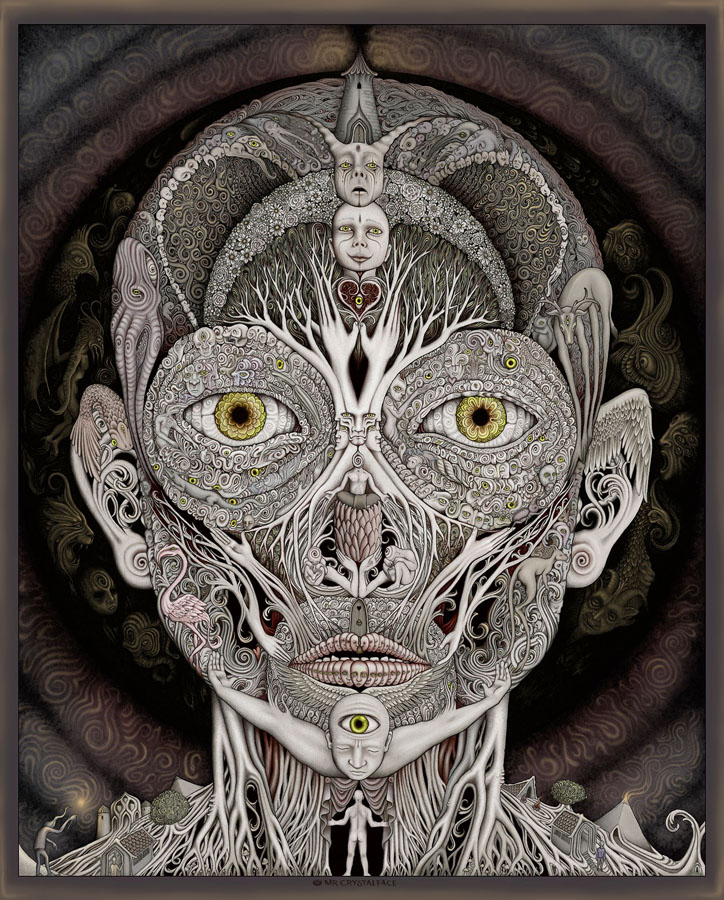
Psychedelic art is a form of visual art that emerged in the 1960s in the US and is characterized by super vivid colors, super-detailed geometric patterns, symmetrical designs and unusual subjects. Psychedelic art reflects the experiences and sensations experienced on psychedelics, such as LSD, iboga, ayahuasca, peyote and mushrooms. Today, psychedelic art is gaining popularity due to a rise in psychedelics research and some celebrity talk about the healing powers of the medicine – mushrooms and ayahuasca. In this article, we’ll explore the history, themes, characteristics, and examples of psychedelic art.
The use of psychedelics is a complex and controversial topic that has been debated by experts in various fields. Some argue that psychedelics have therapeutic potential and can be used to treat mental health conditions like depression, anxiety, and addiction. Others argue that the use of psychedelics can have negative consequences, such as increased risk of psychosis or hallucinogen persisting perception disorder (HPPD) especially if you’re schizophrenic. The use of psychedelics is illegal in most countries, and it is important to approach any drug use with caution and informed decision-making. If you are considering using psychedelics, it is recommended that you consult with a medical professional and do your own research to fully understand the potential risks and benefits. This article is an exploration guide and as I’m not an expert in this research by any means, please refer yourself to the list of organizations listed below studying the healing powers of the sacred medicines.
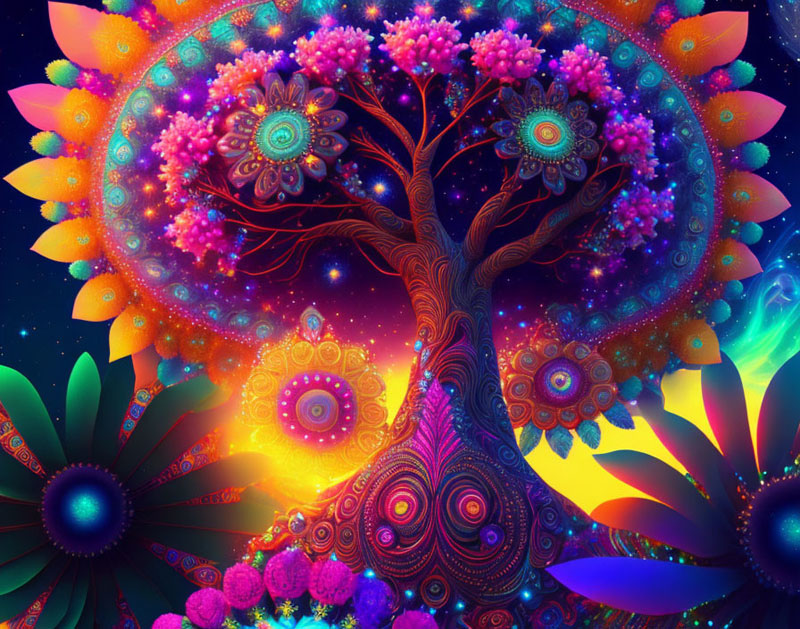
History of Psychedelic Art
Psychedelic art emerged in the 1960s in the US, alongside the counterculture movement and the rise of psychedelic drugs. Influential hippie artists of the time, such as Wes Wilson, Rick Griffin, and Victor Moscoso, created neon-colored posters and album covers for rock bands, such as The Grateful Dead and Jefferson Airplane. Their works had bright colors, bold typography, and trippy visuals that reflected the psychedelic experience. The art was often used to promote concerts and events, and it became a part of the overall psychedelic aesthetic of the time. The ancient history of psychedelic art is just coming to light however as more information and research gets shared in books, podcasts and other research.
Psychedelics art in ancient cultures:
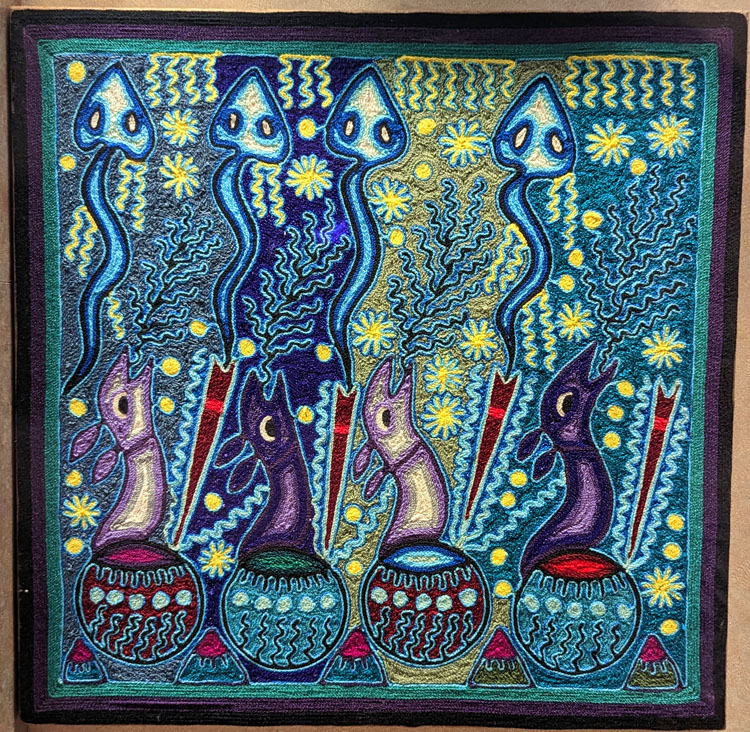
Psychedelics have been used in ceremonies by many ancient cultures for centuries. Graham Hancock claims that even some cave paintings dating back some 30,000 years ago depict the altered states of consciousness. If you look closely at art of any ancient culture, you'll notice the key feature of psychedelic art - a repetitive pattern or design. This happens because when you take the sacred medicine, your sight, hearing and sense of smell change drastically and you see the world in geometric and symmetrical forms, grids and very complex, almost kaleidoscopic designs. These colorful, symmetrical patterns can be found in art of many prominent ancient cultures. Let me explain.
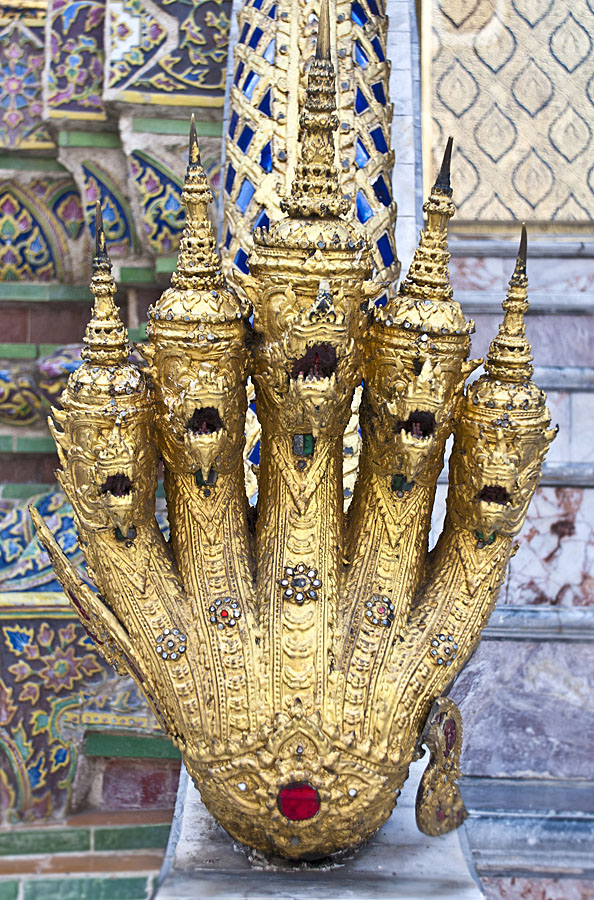
#1 Indigenous cultures of the Americas:
Many indigenous cultures in the Americas, such as the Mazatec people of Mexico and the Shipibo people of the Amazon, have used various plant-based psychedelics such as ayahuasca, peyote, and psilocybin mushrooms for spiritual and healing purposes. Their art is simple, yet it features perfect geometric designs that you normally don’t observe in nature.
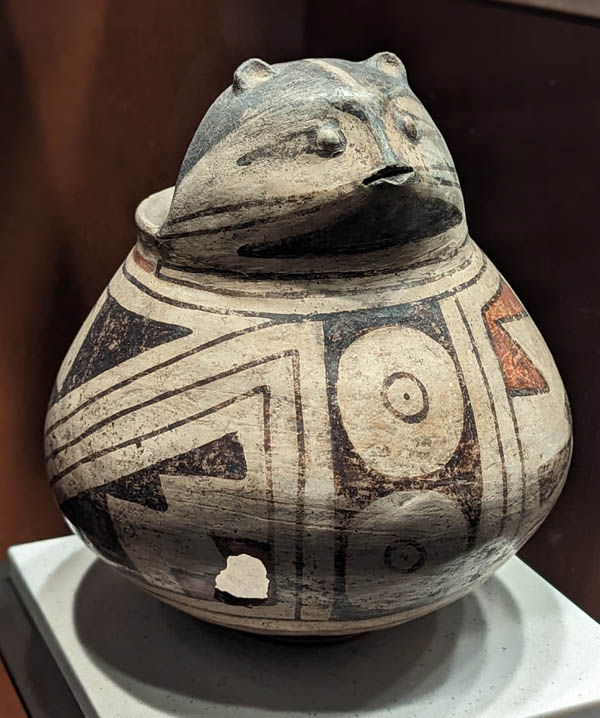
#2 Ancient Egyptians:
The ancient Egyptians used the blue lotus plant, which has psychoactive properties, for medicinal and religious ceremonies. The murals in the tomb of Pharaoh Tutankhamun, depict scenes of people using the blue lotus in a ceremonial context.
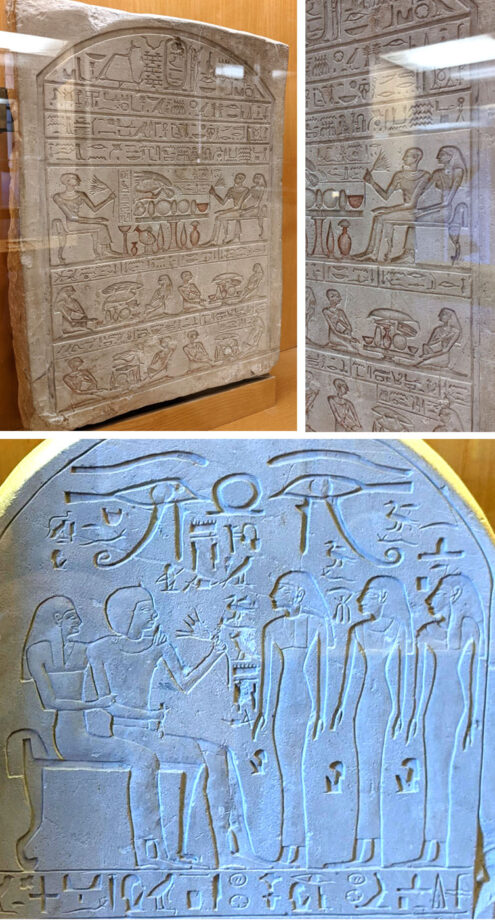
#3 Ancient Greeks:
The ancient Greeks may have used various psychoactive substances, including cannabis, opium,and ergot (a fungus that contains LSD-like compounds), for medicinal and spiritual ceremonies. The painting “The Thriasian Mysteries” by the artist Polygnotus, depicts people participating in Dionysian rituals that involved the consumption of psychoactive substances.
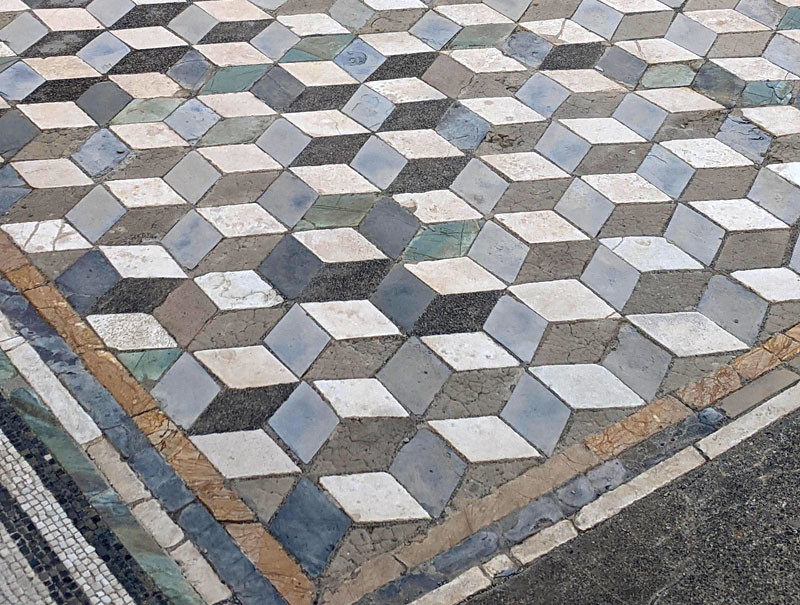
You died before you died and so didn’t die.
Brian C. Muraresku appeared on Joe Rogan Experience podcast #2047 talking about his over a decade long research that he put in a book “The Immortality Key: the secret of the religion with no name”. In the podcast episode Brian describes ancient Greek ritual of drinking a special potion at the Temple of Eleusis, which was a carefully balanced brew of alcohol, herbs, spices and ergot. (Ergot was a hallucinogenic fungus in rye and barley). Only women prepared the drink that gave the users transcendent experiences. This ancient religious practice got destroyed by the third century after Roman acceptance of Christianity as a main religion.
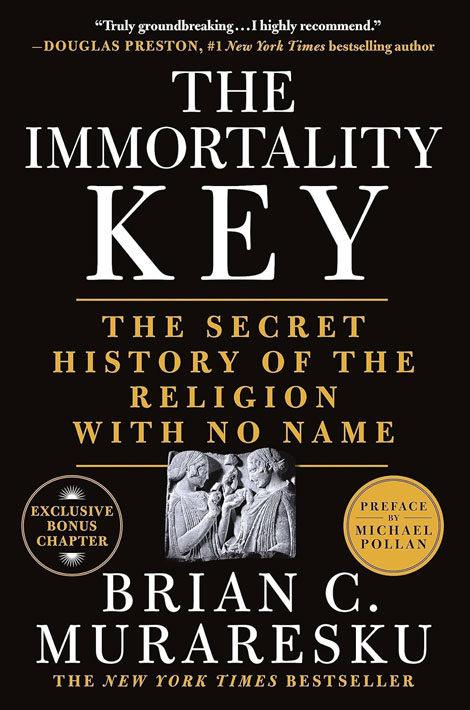
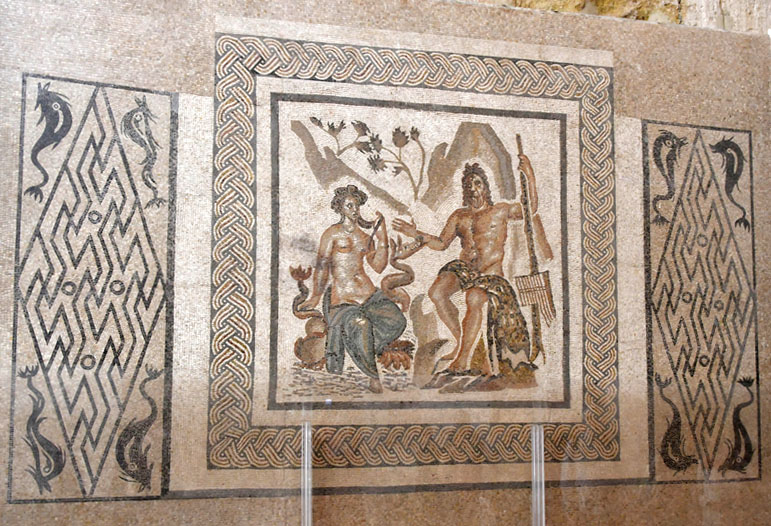
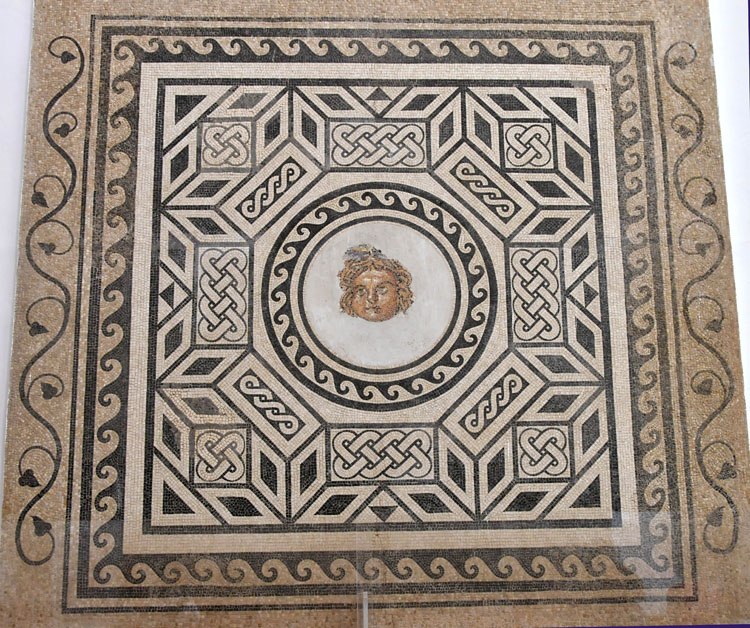
#4 Ancient Indians:
The ancient Indians used a variety of plant-based psychedelics, such as the soma plant, for spiritual and religious purposes. I think that Indian and Thai ancient architecture has a lot of visual influence derived from the use of psychoactive ingredients in potions they probably used in their religious ceremonies.
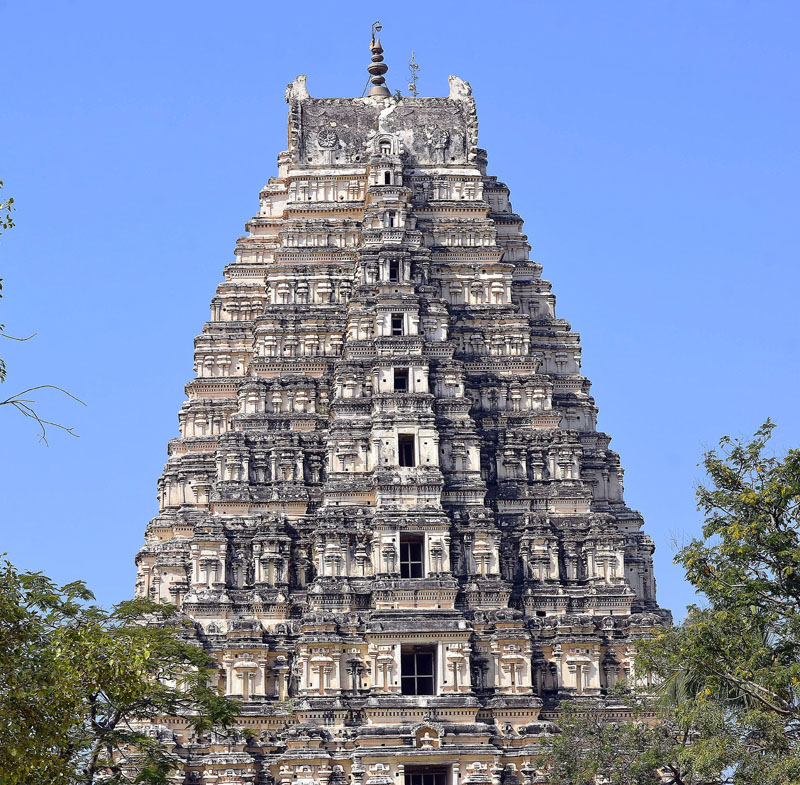
Thailand
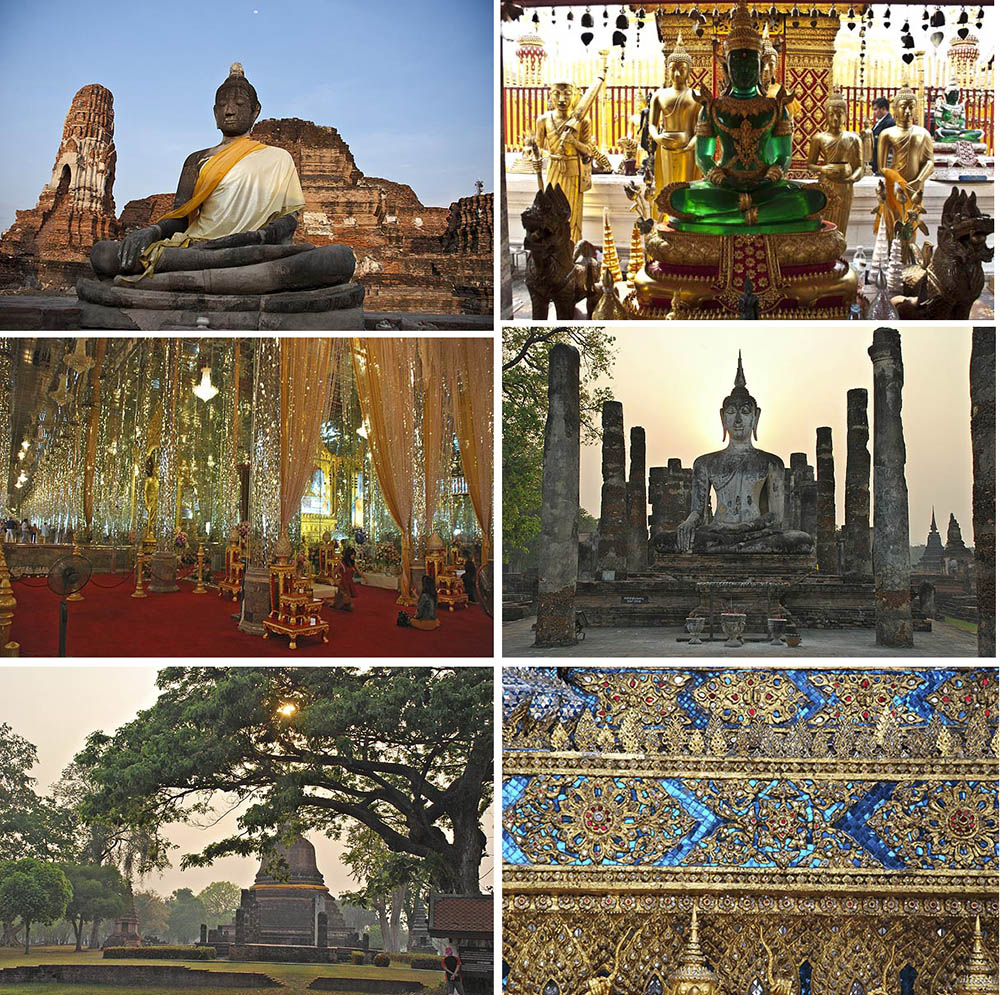

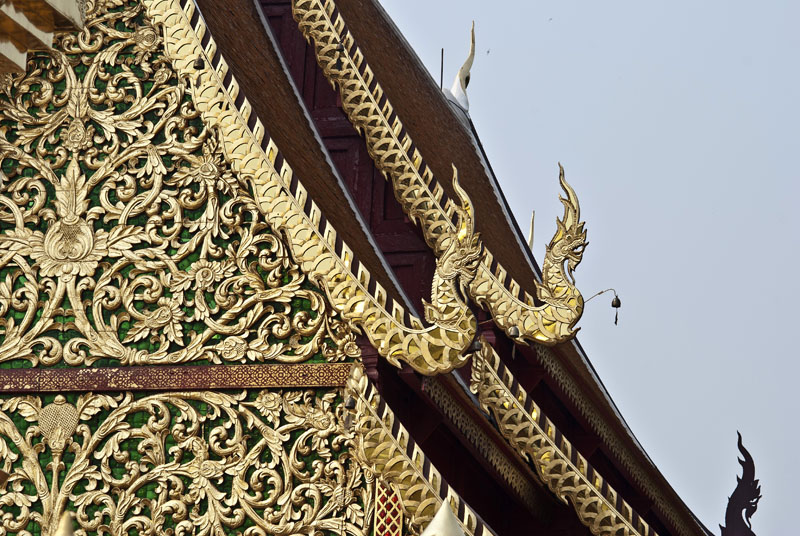
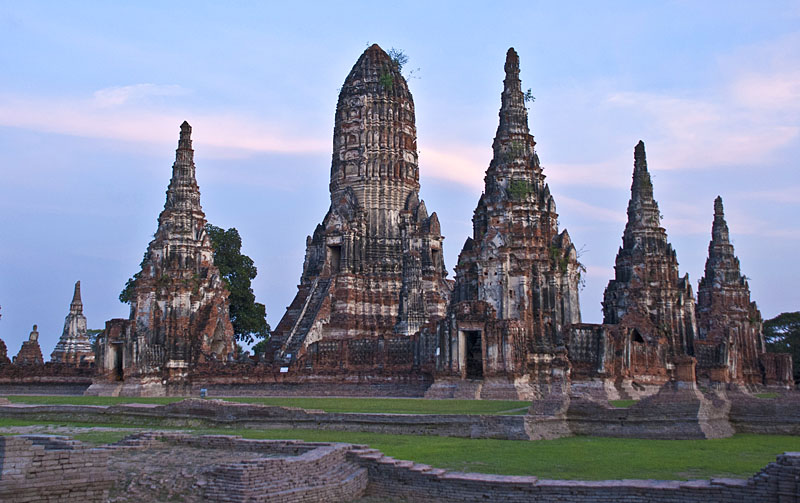
Mandala art originated in India that became a spiritual and ritual symbol of Buddhism that spread to Tibet, Nepal, China, Korea, and Japan. The image first appeared in the Rig Veda in the 1st century BCE. Mandalas are a symbolic diagram used in the performance of sacred rites and meditation. They represented – Fullness, Wholeness, Infinity – the feeling you may receive during your psychedelic journey. Mandala art is closely associated with the practice of meditation. The three types of mandalas are: Sand mandala, Healing mandala, Teaching mandala. Just like “The flower of life”, Mandala has a circular, geometric design that symbolizes the ideal state of Universe. Mehndi mandala art painted on hands looks very similar to the visual feeling of geometric patterns seen on hands during the psychedelic journey.
#5 Ancient Persians:
The ancient Persians used opium and other psychoactive substances for medicinal and spiritual rituals. (Islam became the dominant religion in the Persian Empire after the Arab conquests of the seventh century. The first Persian Empire was shaped by Zoroastrianism. The Persian-speaking world became predominantly Muslim in the mid-seventh century.) When we look at production of Qurʼān manuscripts with elaborate calligraphic, biomorphic and decorative motifs we can see many repetitive geometric designs painted in several colors and gold that has evolved into a high art. You can see pages at the Library of Congress.
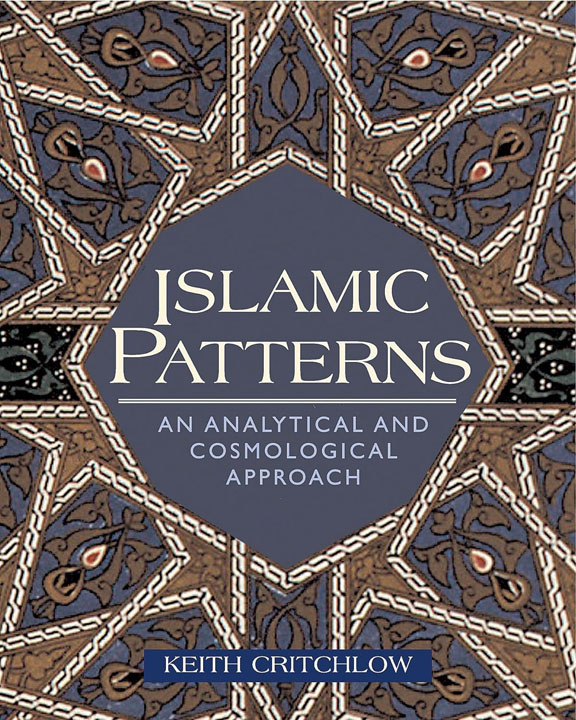
If you’re in Europe, You can see Islamic designs in situ in Spain. One of the most famous fortresses is Alhambra in Granada, Spain. It was the inspiration for the famous artist- M.C. Escher. He studied Moorish tessellations in Alhambra to create his original drawings.
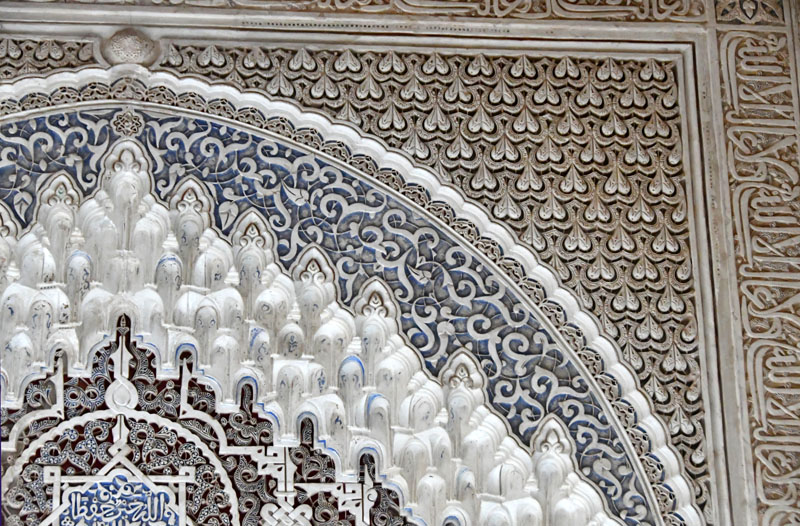
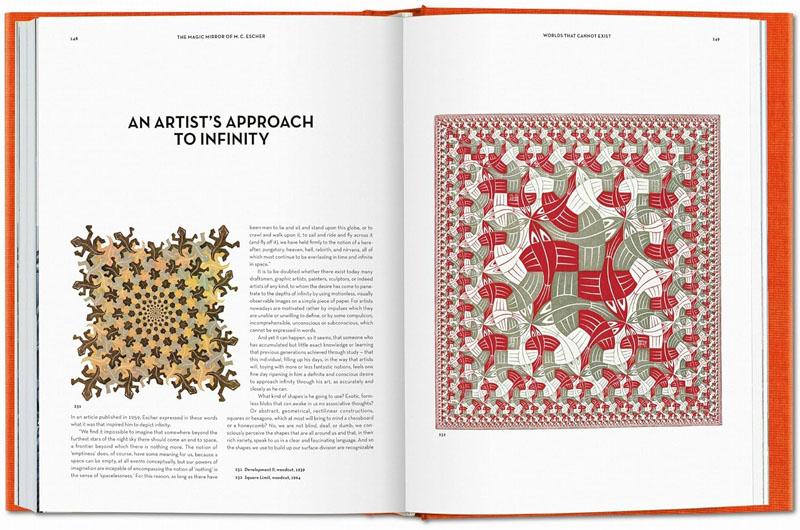
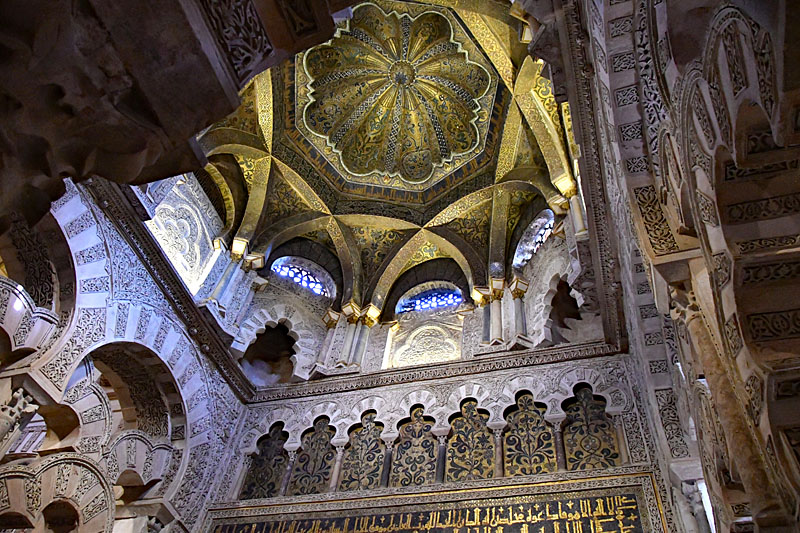
#6 Ancient Chinese:
The ancient Chinese used various psychoactive substances, including cannabis.
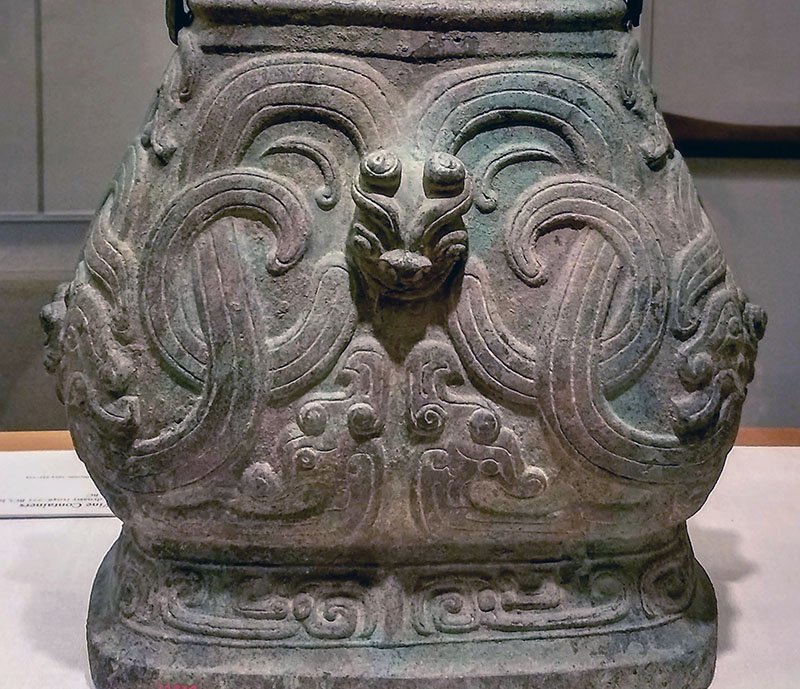
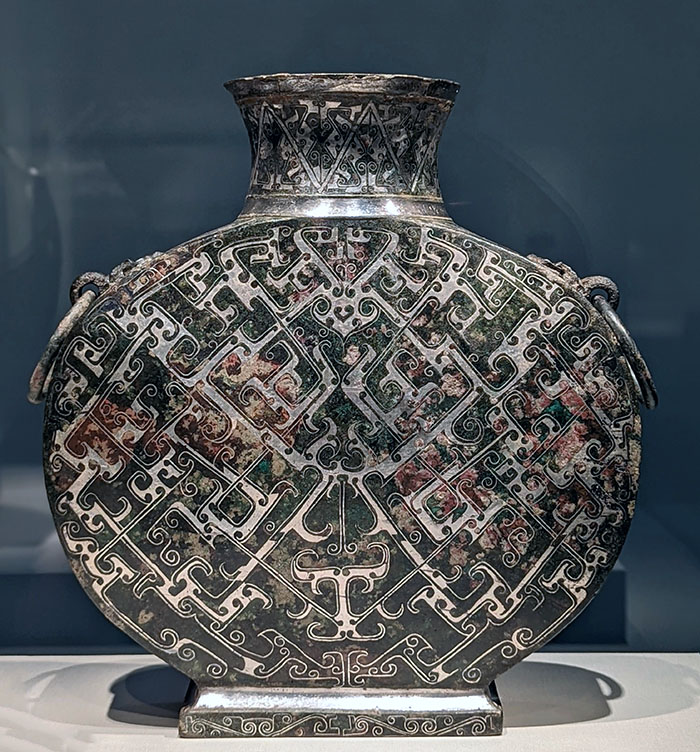
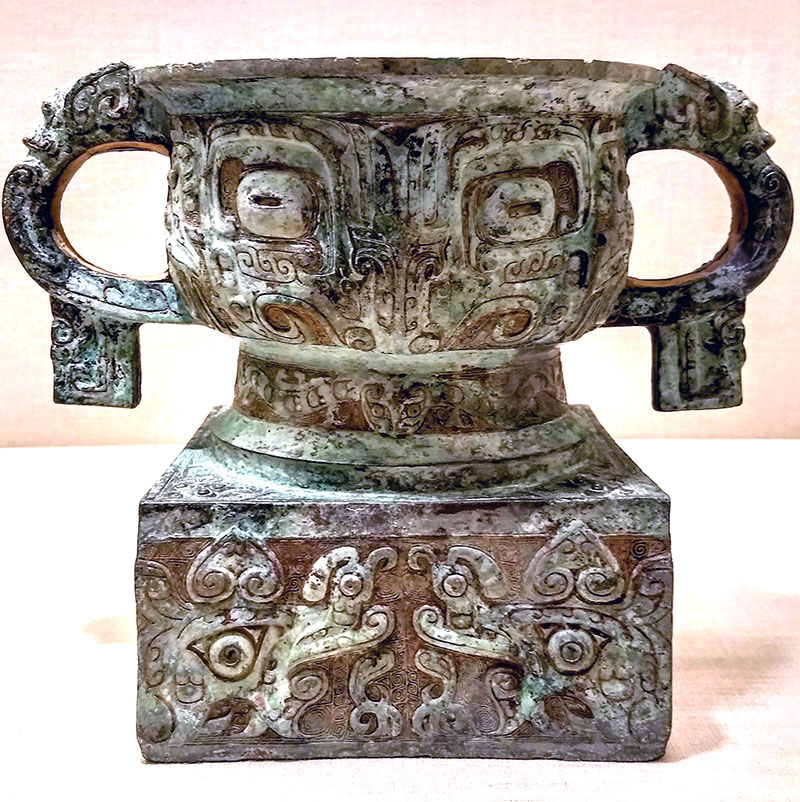
#7 Indigenous cultures of Africa:
Many indigenous cultures in Africa have used psychoactive plants for spiritual and healing purposes, such as the iboga plant in Gabon and the kanna plant in South Africa. The art style features repeated and symmetrical designs that are inspired by these experiences include the intricate textiles and beadwork of the Ndebele people of South Africa and the colorful paintings of the Dogon people of Mali. In his book titled”Supernatural” Hancock describes the use of iboga in African culture.
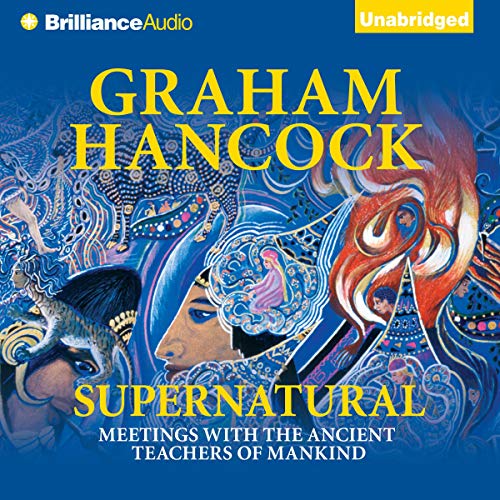
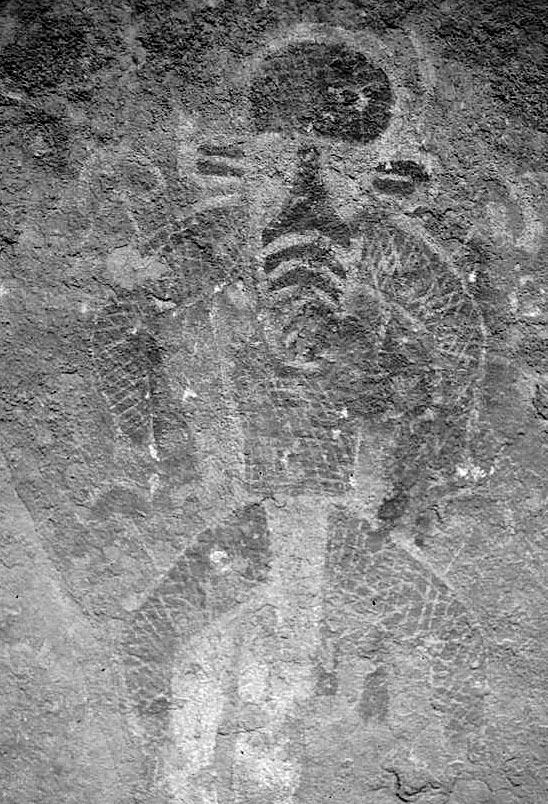
Tassili n’Ajjer is a site with prehistoric cave art in Algeria. “More than 15,000 drawings and engravings show the climatic changes, the animal migrations and the evolution of human life on the edge of the Sahara from 6000 BC to the first centuries of the present era. The geological formations are of outstanding scenic interest, with eroded sandstones forming ‘forests of rock’.” There is an image of a man, possibly a shaman, with many mushrooms growing out of his body found there. Dating back from 9,500 to 7,000 BC , it’s the oldest known petroglyph that depicts psychedelic mushrooms.
Shamanism
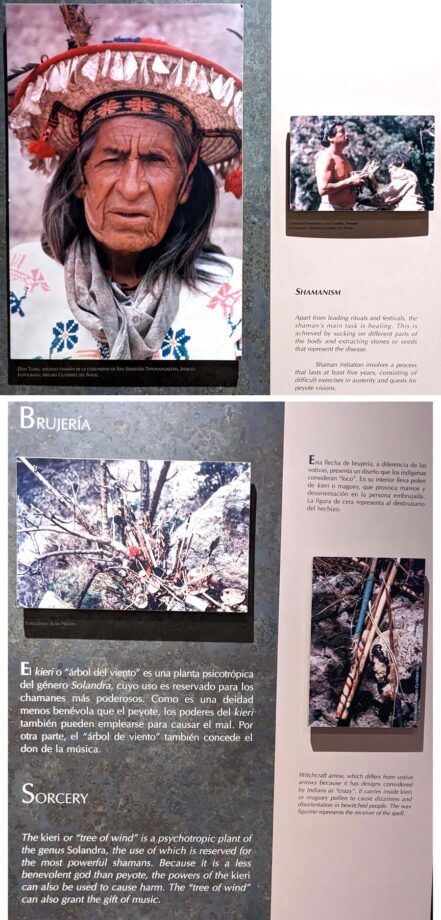
Sorcery: The kieri or “tree of wind” is a psychotropic plant of genus Solandra, the use of which is reserved for the most powerful shamans. Because it’s less benevolent god than peyote, the powers of the kieri can also be used to cause harm. The ”tree of wind” can also grant the gift of music. According to Indians, the witchcraft arrow differs from the votive arrows because of having “crazy” designs on it. It carries pollen inside the kieri that causes dizziness and disorientation in bewitched people. The wax figure represents the receiver of the spell. Source: the archeological museum in Mexico City.
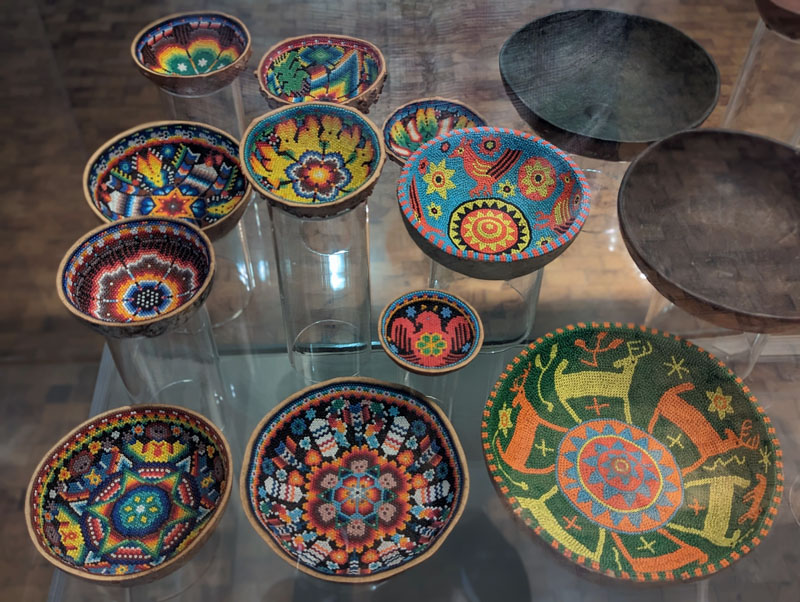
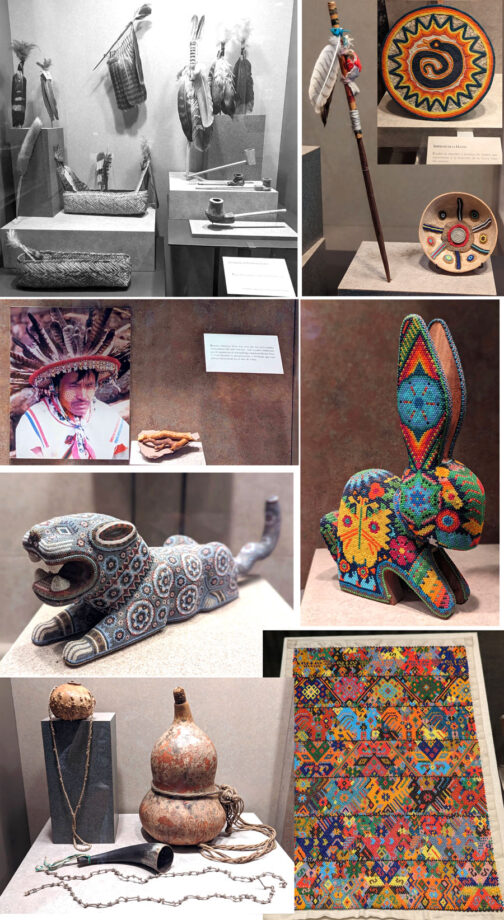
The Peyote Dance:
During the pilgrims’ peyote visions at Wirikuta, serpents of rain appear to Huichol pilgrims. Huichols say that peyote seekers bring these serpents with them when they return to their sierra communities. During the great peyote celebration at the beginning of the rainy season, peyote seekers transform themselves into these serpents. They dance with white feather apparels and take rain to the four routes of the universe. (This text is taken from the archeology museum in Mexico City).
Peyote chant: The blue flowers, which are behind the mountains, which are talking… You who claim to know it all, interpret them.
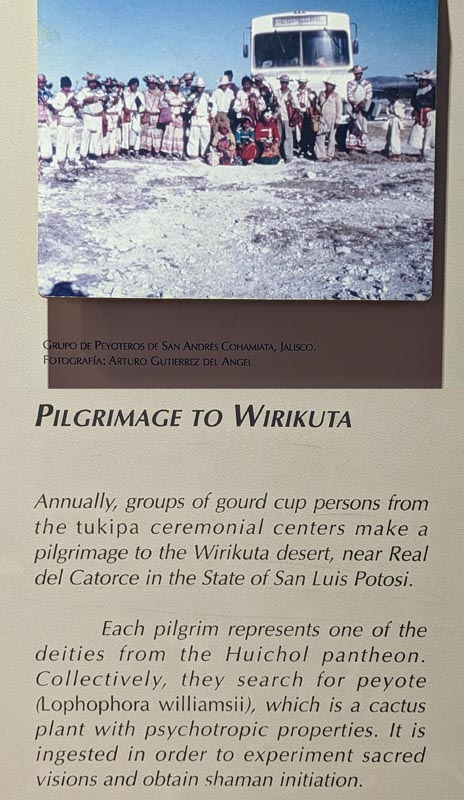
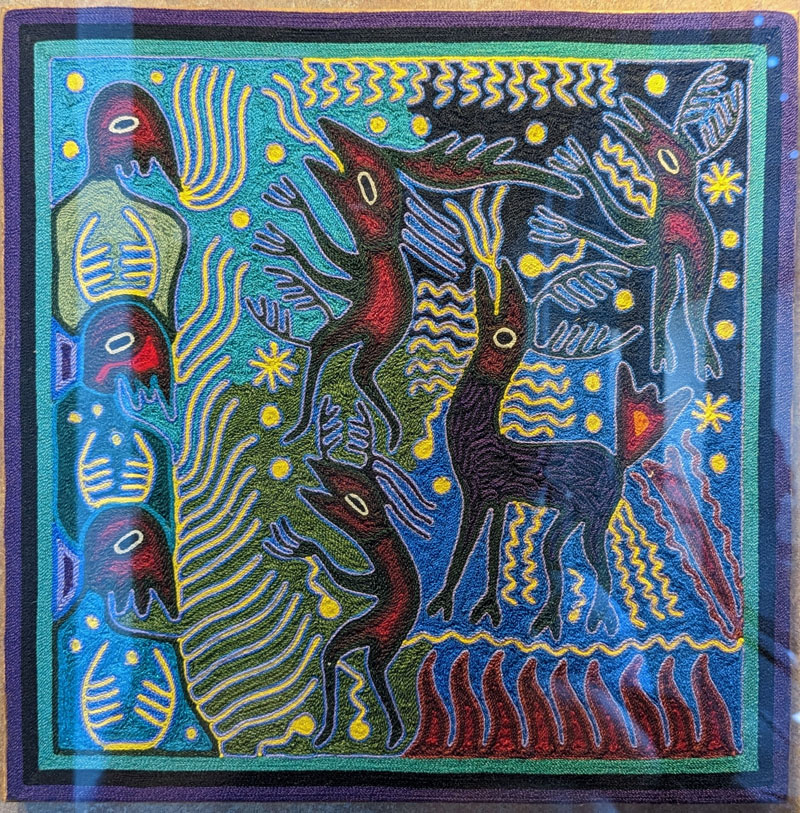
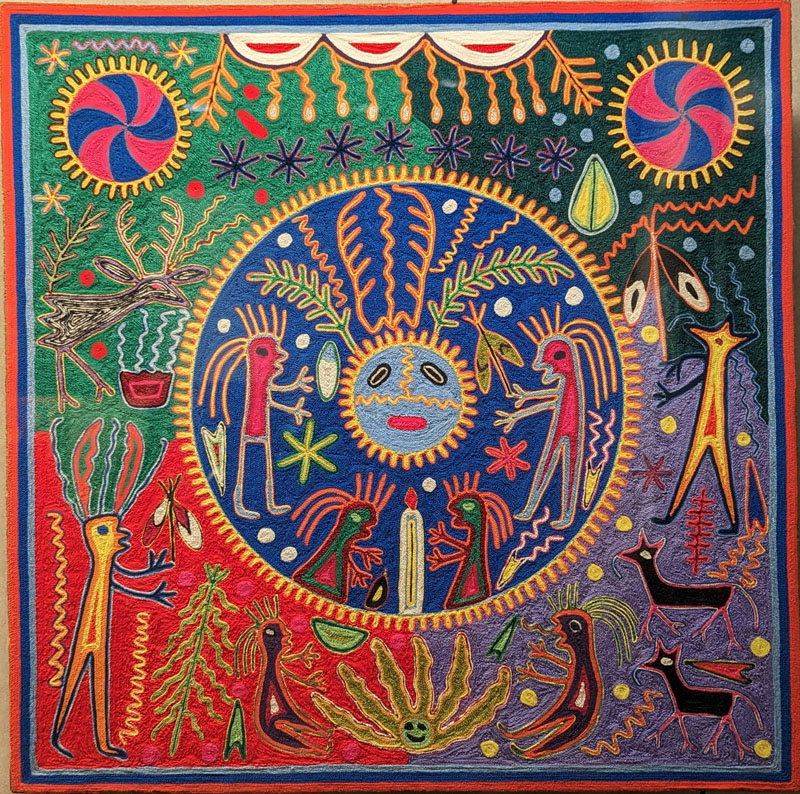
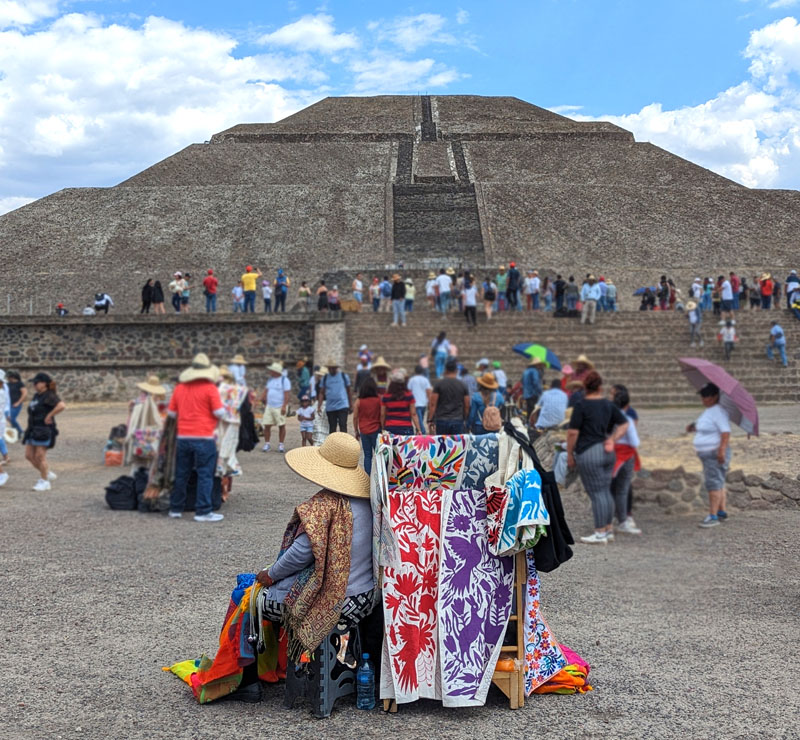
Why psychedelics were used in ancient cultures:
Psychedelics may have been used in ancient cultures for various reasons.
- Spiritual and Religious Practices: In many ancient cultures, psychedelics were used in spiritual and religious practices as a means of connecting with the divine. Shamans and other spiritual leaders would use psychedelics to enter altered states of consciousness and communicate with spirits, ancestors, or deities. In his book-the Immortality Key- Brian Muraresku describes his research on the use of psychedelics in ancient Greece. The Greeks and Romans had once in a lifetime ceremony in Eleusis drinking potion that alleviated the fear of death.
- Healing Practices: Ancient cultures used psychedelics as a form of medicine to treat physical and mental ailments. For example, certain indigenous tribes in South America have used ayahuasca as a medicine for centuries to treat a variety of emotional and psychical traumas.
- Rites of Passage: In some cultures, psychedelics were used in rites of passage to mark important transitions in a person’s life, such as puberty, marriage, or death. The use of psychedelics in these ceremonies was believed to help individuals gain a deeper understanding of themselves and their place and connection in the Universe.
- Artistic Inspiration: Ancient artists recorded the beauty of the divine spirit in art. It’s obvious to see the use of psychedelics in art of several ancient cultures. For example, the Mayans created colorful pottery and symmetrical and geometric art. The Islamic artists perfected the use of patterns in their designs of Islamic mosques. The geometrical patterns of Islamic art are the most sophisticated ones I’ve seen so far. They reveal the cosmological laws and hidden reality of the creation of the Universe. Greco-Roman art has many remnants of mosaic floors’ geometric patterns. Thai and Indian architecture features repetitive structure and designs that are visually very similar to psychedelic experience.
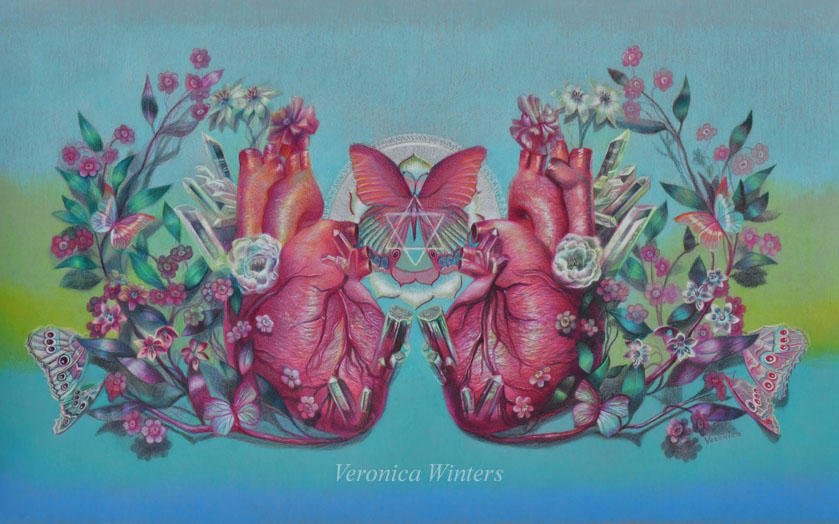
Psychedelics can treat trauma:
Psychedelics, when used in a therapeutic setting in nature or in a ceremony under the guidance of a trained professional or indigenous shaman, have shown promising results in treating trauma. Some celebrities like Will Smith and Prince Harry are becoming more open to talk about their experience healing emotional traumas drinking ayahuasca. Psychedelics can help you deal with the most deep, painful and suppressed emotions you can't seem to concur in your life. You travel very deep inside your mind and heart as the sacred medicine gives you guidance and lets you on an emotional journey to relive some moments with a different perspective. You feel, see and hear everything in a powerful synthesis that's often described as the synesthesia. With a set intention and guidance, the medicine takes you where you NEED to go, NOT where you think you will go. This means that you would explore your deepest wounds to find understanding and healing of your deepest pain. This also means that you can enter into both a very beautiful world and a scary one. Every journey is necessary even the dark one to learn from it because the darkness is our shadow we need to embrace and to learn from to become whole. That's why it's so effective in treating people with various conditions. You can heal your wounds in one or few sessions, which could take years in therapy. While on a journey, you receive guidance in thoughts, music and visuals. The post integration session with a psychologist or shaman can help you integrate these experiences into your daily life.
It’s like opening an invisible portal in your mind that lets you experience a parallel reality of the spiritual realm that’s incredibly powerful, complex and intelligent. It shows you the forces of both the light and the dark worlds where you explore yourself and your relationship to the divine and intelligent Universe.
Veronica Winters
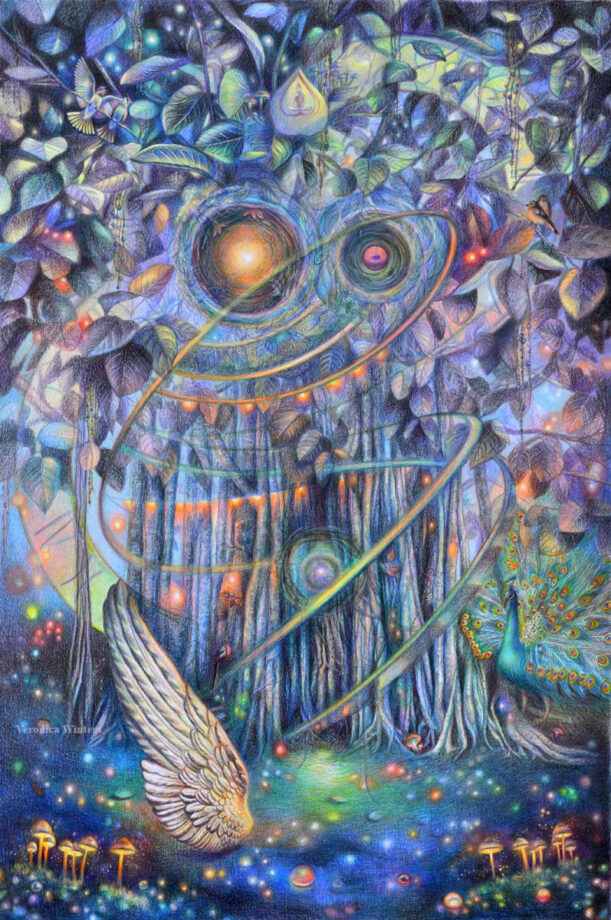
Here are some ways in which psychedelics may help treat trauma:
- Increased emotional openness: Psychedelics can help individuals feel more emotionally open and connected to their feelings. This can be helpful for individuals who have experienced trauma, as they may have difficulty accessing and processing their emotions. This relates to people who not only experienced war but also to anyone struggling to process and accept what they feel because of childhood traumas, such as psychological and physical abuse.
- Reduced fear and anxiety: Psychedelics have been shown to reduce fear and anxiety in individuals, which can be helpful for those who experience anxiety and panic attacks as a result of trauma.
- Increased self-awareness: Psychedelics can increase self-awareness, helping individuals better understand their thoughts and emotions. This can be helpful for those who have experienced trauma, as they may struggle with feelings of shame or guilt.
- Enhanced communication: Psychedelics can enhance communication between different parts of the brain, leading to new insights and perspectives. This can be helpful for individuals who have experienced trauma, as it may allow them to reframe their experiences in a new light.
- Spiritual experiences: Some people report having spiritual experiences while on psychedelics, which can lead to feelings of connectedness and healing.
It’s important to note that while psychedelics may show promise in treating trauma, they should only be used in a therapeutic setting under the guidance of trained professionals or a shaman. It’s also important to have a safe and supportive environment when using psychedelics.
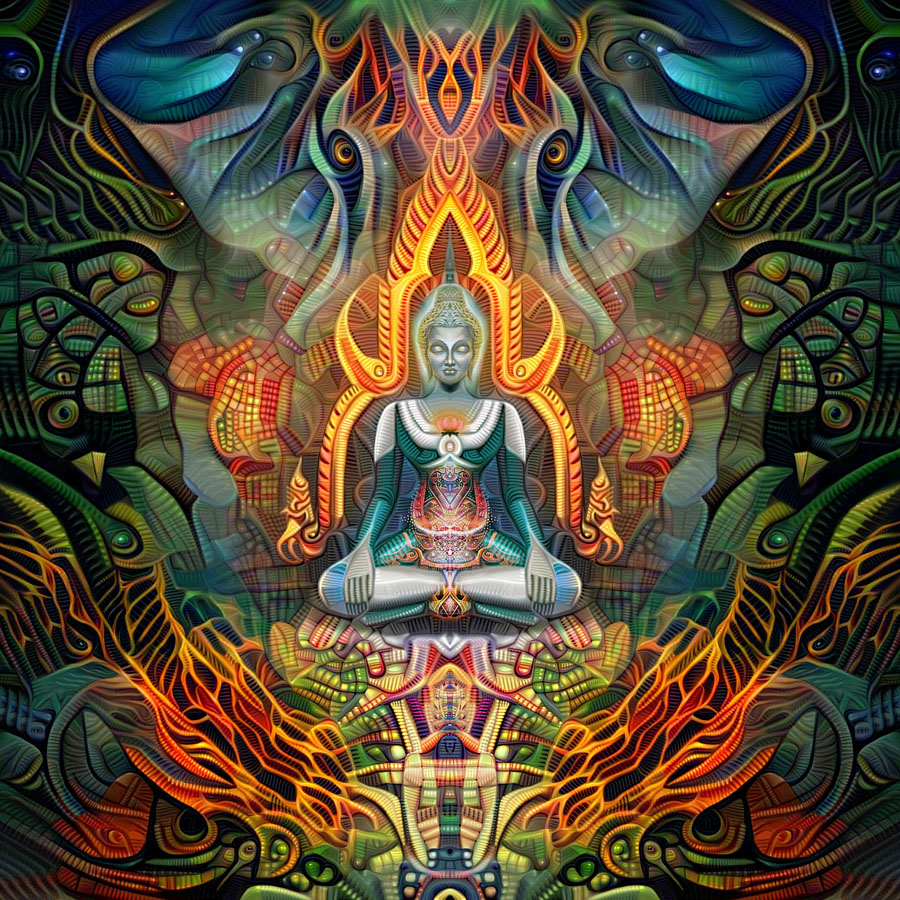
Psychedelic artists:
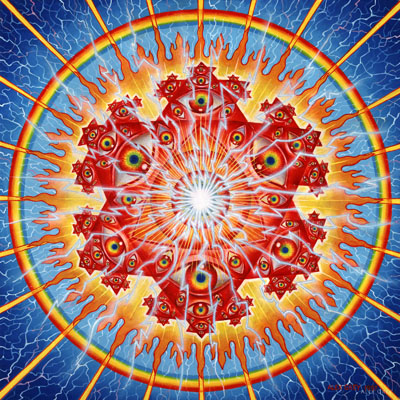
by Alex Grey https://www.alexgrey.com/
Here are some notable psychedelic artists, both past and present in no particular order:
- Andrew Gonzalez
- Luis Tamani
- Pablo Amaringo
- Amanda Sage
- Cameron Gray
- Crystalface
- Olga Klimova Art
- Ashley Christudason (Jungle Eye)
- Adam Scott Miller
- Daniel Mirante
- Dan Lam
- Wes Wilson
- Rick Griffin
- Simon Haiduk
- Victor Moscoso
- Alex Grey
- Robert Venosa
- Martin Sharp
- HR Giger
- Android Jones
- Luke Brown
- Martina Hoffmann
- Carey Thompson
- Chris Dyer
- Randal Roberts
- Allyson Grey
- Justin Totemical
This is by no means an exhaustive list, and there are many other talented psychedelic artists out there who have contributed to this fascinating art movement.
Psychedelic art can be found in a variety of mediums, from paintings and drawings to digital art and music album covers. Some examples include Alex Grey’s visionary and spiritual paintings, and the album covers of Pink Floyd’s The Dark Side of the Moon and The Liquid Bloom’s Re. Generations cover painted by a Peruvian artist Luis Tamani. Today, contemporary psychedelic artists, such as Android Jones and Amanda Sage, continue to create psychedelic-inspired works that push the boundaries of traditional art.
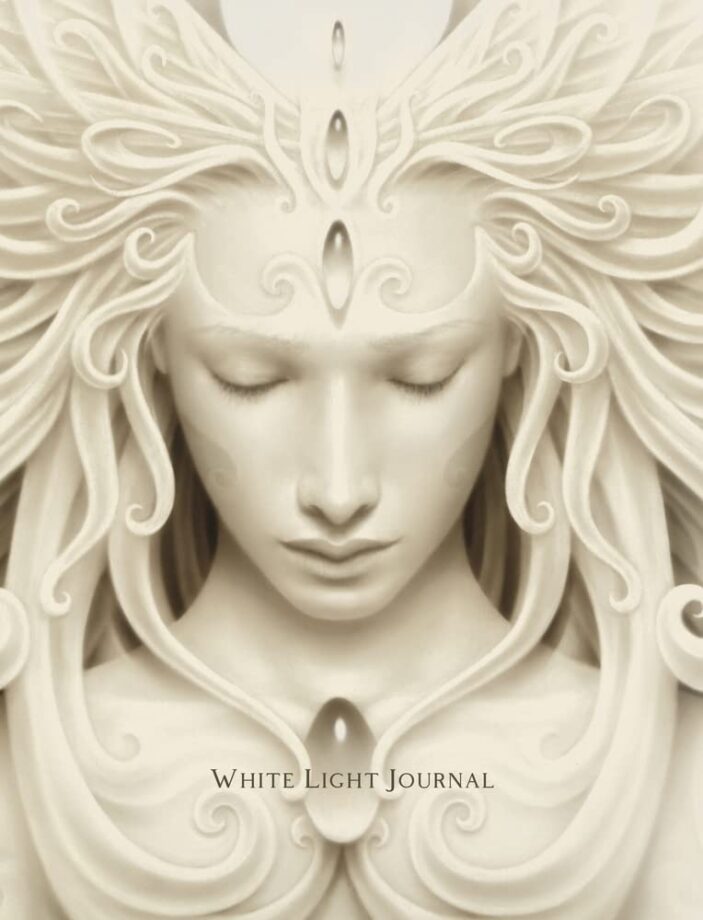
The importance of visionary and psychedelic artists:
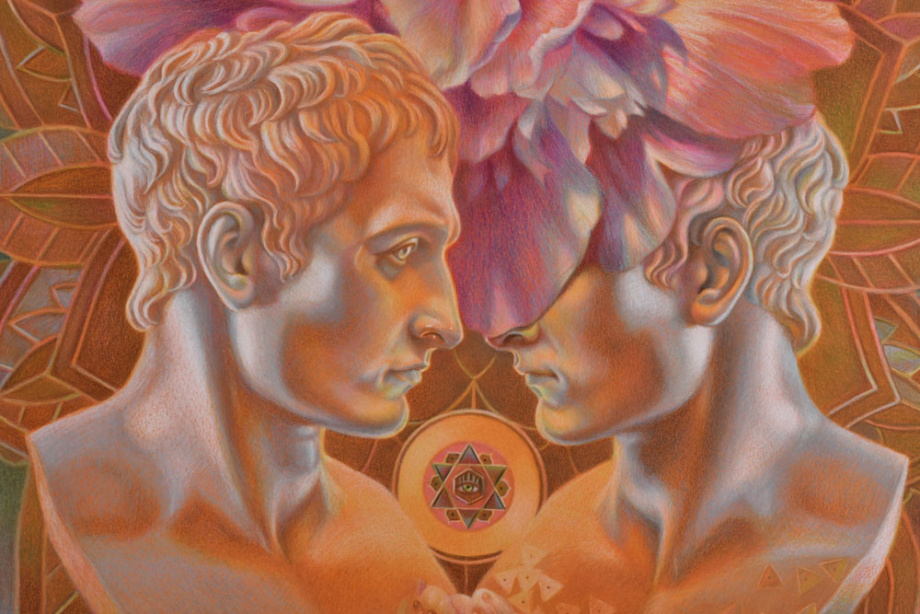
- Expanding consciousness: Their art often explores spiritual, mystical, or psychedelic experiences that can help expand our understanding of the world and our place in it. By depicting these experiences through visual art, they can help us access and explore different states of consciousness and emotion. Many psychedelic artists wish to channel feelings of love and connection.
- Challenging norms: Visionary and psychedelic art often challenges the norms of mainstream culture, pushing boundaries and exploring ideas that are not typically represented in mainstream art.
- Inspiring creativity: Many artists and creatives are inspired by the work of visionary and psychedelic artists, and their work has had a significant influence on popular culture.
- Celebrating unity: Visionary and psychedelic art often celebrates love and unity, exploring different cultures, beliefs, and experiences in ways that can help build understanding and empathy across different communities.
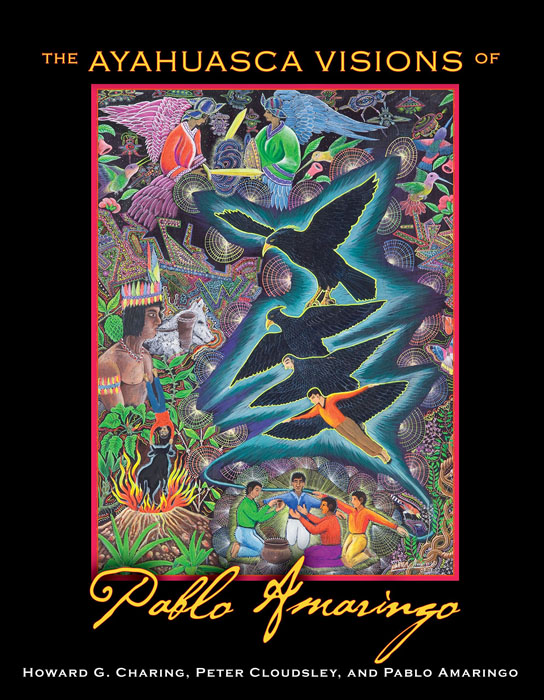
What is psychedelic art style?
The visual elements of psychedelic art are striking and often surreal but differ from surrealism, imaginative realism or fantasy art. Super bright colors, very detailed geometric patterns, mirrored, symmetrical images, birds, animals, insects and unearthly shapes or beings are common features, and they reflect the heightened sensations and altered states of consciousness that come with psychedelics. Other characteristics of psychedelic art include the use of psychedelic typography, such as wavy and distorted lettering, animals, plants and the incorporation of spiritual and mystical themes that are often explored by mythical and visionary artists as well. Many psychedelic artworks share a sense of otherworldliness, transcendence, and a fascination with the inner workings of the mind. Experienced in safe conditions with integration session before and after a trip, psychedelic journey is a very unique trip tailored to every individual and thus the imagery and knowledge gained during the trip reflects each person’s unique trauma and healing experiences.
The experience of seeing geometric shapes and patterns to create psychedelic art
Psychedelic art incorporates vivid colors, complex geometry and mirrored or kaleidoscopic images that are viewed under the influence of psychedelics. When someone takes a psychedelic substance, their brain experiences changes in perception, leading to visual distortions and heightened sensitivity to colors, patterns, and music. Complex and constantly changing geometric shapes, in particular, can appear to be constantly shifting, morphing, and pulsating, creating a sense of movement and vibrancy in the visual field.
The experience of seeing geometric shapes and patterns while under the influence of psychedelics is a phenomenon that is often referred to as “visual geometry” or “form constants”. These visual effects are thought to occur as a result of the way that psychedelics interact with the brain’s neural pathways and sensory processing centers. Psychedelics like LSD and psilocybin are known to interact with the serotonin system in the brain, which is involved in regulating mood, appetite, and sleep, as well as sensory perception. When someone takes a psychedelic substance, their brain experiences an increase in neural activity and communication, leading to a breakdown in the normal functioning of the brain’s sensory processing centers. Some researchers believe that these geometric patterns reflect the underlying structure and organization of the brain’s visual processing system, which becomes more apparent when the system is disrupted by the psychedelic substance. It’s very difficult to translate this visual experience on canvas and Alex Grey seems to be the most successful artist doing it. However, with the rise of AI -generated art and digital art, it’s much easier to reconstruct very complex geometric patterns and shapes visually that often involves multiplication, kaleidoscopic and mirror-like reflection of geometric patterns.
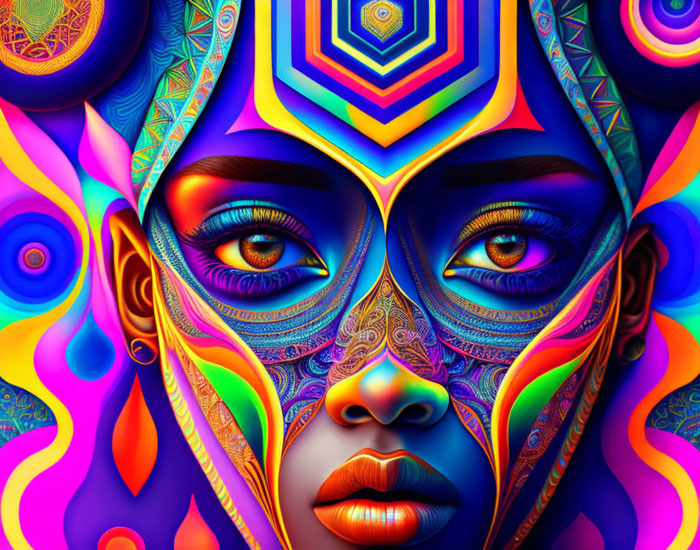
Furthermore, many psychedelic artists draw inspiration from spiritual and mystical traditions that use geometric shapes as a means of accessing altered states of consciousness. For example, mandalas, which are geometric patterns used in Hinduism and Buddhism, are often used in psychedelic art to represent the self and the universe, and to facilitate meditation and spiritual reflection. The use of geometry in psychedelic art can also be seen as a way of exploring the fundamental building blocks of reality and the mathematical principles that govern the natural world. The use of geometry in psychedelic art reflects both the subjective experience of altered states of consciousness and a fascination with the mathematical and spiritual dimensions of the natural world.
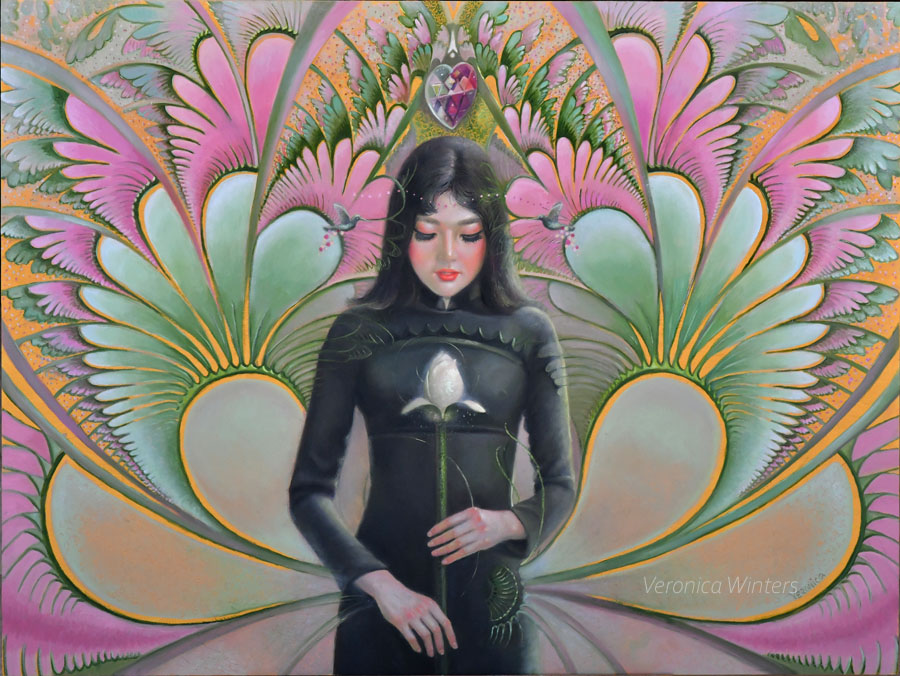
Some psychedelic art style influences:
Psychedelic art is a broad category that encompasses a wide range of styles and aesthetics. While artists try to capture their feelings and messages in a visual format, they also use other visual influences to create their art, including:
- Surrealism: Many psychedelic artists draw inspiration from the surrealist movement, which emphasizes the irrational and the unconscious mind. Surrealist imagery often features dreamlike or absurd elements, and can be disorienting or unsettling.
- Pop Art: The pop art movement of the 1960s and 70s had a strong influence on psychedelic art. Pop art often features bright colors, bold lines, and commercial or consumerist imagery, and can have a playful or ironic tone.
- Art Nouveau: The Art Nouveau movement of the late 19th and early 20th centuries, with its sinuous, organic lines and floral motifs, has also been an influence on psychedelic art. Art Nouveau style has the same principles of symmetry in image creation.
- Op Art: Op art, which emerged in the 1960s, is characterized by the use of optical illusions and geometric patterns to create a sense of movement or depth. Many psychedelic artists incorporate op art techniques into their work to re-create a different kind of reality.
- Digital Art: With the advent of digital technology, many contemporary psychedelic artists work with digital tools to create complex, abstract images that are difficult to produce using traditional media.
Some popular computer software used to create psychedelic art in digital format:
There are many software programs that can be used to create digital psychedelic art. Some of the most popular ones include:
- Adobe Photoshop – This is one of the most widely used image editing programs and offers a wide range of tools and filters for creating digital psychedelic art.
- Adobe Illustrator – This vector graphics editor is often used to create psychedelic designs with geometric shapes and patterns.
- Procreate – This digital art and drawing app is popular among iPad users and offers a variety of tools and effects for creating psychedelic artwork.
- Corel Painter – This painting software is often used by artists to create digital paintings with a psychedelic style.
- Fractal Explorer – This program allows users to create intricate fractal designs, which can be used to create psychedelic art.
- GIMP – This free and open-source image editing software offers a wide range of tools and filters for creating digital art with a psychedelic style.
- Mandala Maker – This online tool allows users to create intricate mandalas, which can be used in psychedelic artwork.
There are several AI programs and tools that can be used to create psychedelic art. Some popular examples include:
- Deep Dream – This is a neural network-based algorithm that can generate psychedelic images by processing an original image through multiple layers of artificial neural networks.
- Neural Style Transfer – This is another AI-based algorithm that can generate psychedelic art by transferring the style of one image onto another.
- Artbreeder – This is an online tool that uses AI to generate new and unique psychedelic art by combining different images and styles.
- Runway ML – This is an AI-based software that can be used to create psychedelic art and other types of generative art.
- Ganbreeder – This is another online tool that uses AI and generative adversarial networks (GANs) to generate psychedelic art.
AI programs and tools offer a fantastic to create psychedelic art and explore the potential of artificial intelligence in the creative arts.
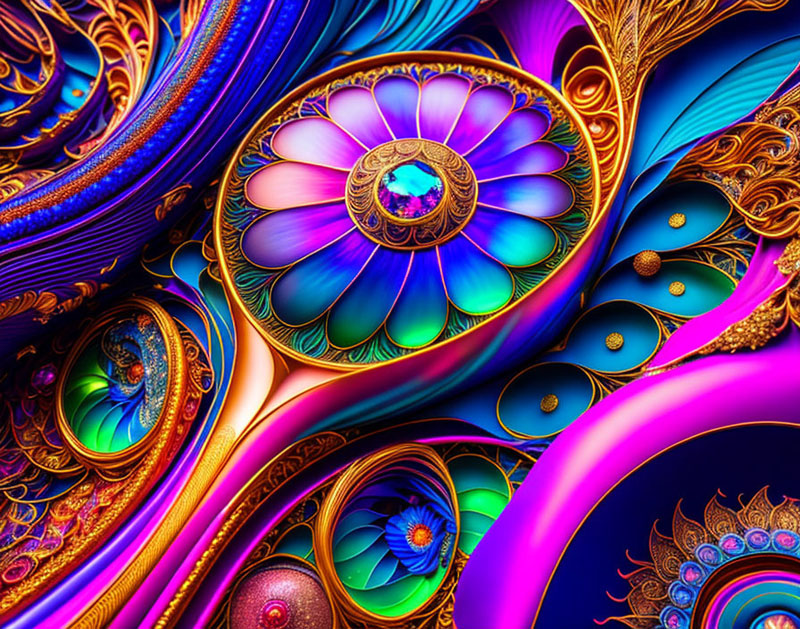
Psychedelic Art Meanings and Interpretations
Dreams inspire my work, as do various philosophies on spirituality, consciousness and existence.
Mr. Crystalface (David Faulkner)
The interpretation and meaning of psychedelic art can vary because it’s a deeply personal experience. However, in the 1960s it was a celebration of freedom and experimentation that carried over the negative stereotypes associated with psychedelic art into our culture. One negative idea is that it promotes drug use or is “bad” art, but if you uncover true meaning or purpose of the sacred medicine, you may have life-changing experiences that can help you live in a totally different way with more love and compassion for yourself and others. Sacred medicines help us heal and see beyond our day-to-day reality. They connect us to the vast consciousness of the Universe.
Contemporary psychedelic art is widely inspired by a variety of spiritual and mystical traditions from around the world as well as deeply personal, healing experiences. Many psychedelic artists have been influenced by Eastern religions like Hinduism and Buddhism, as well as shamanic traditions from indigenous cultures of the Americas. It’s a form of spiritual and mystical art, showing transcendental experiences. Most contemporary visionary artists try to capture the altered state of consciousness or the illusive state of mind that shows feelings of profound love, the power of higher consciousness and our interconnectedness with everything living. Contemporary psychedelic art can transport you to healing, nature-infused worlds to feel the connection. When we feel depressed we are disconnected from the source. By experiencing that connection on a ceremonial psychedelic journey, you may lose the fear of death that was described in ancient Greek literature. Today artists try to capture the essence of Oneness in their psychedelic art, which can include mandalas, spiritual symbols, natural world with animals and plants as well as depictions of mystical experiences and spiritual forms rather than just beautiful geometric shapes.
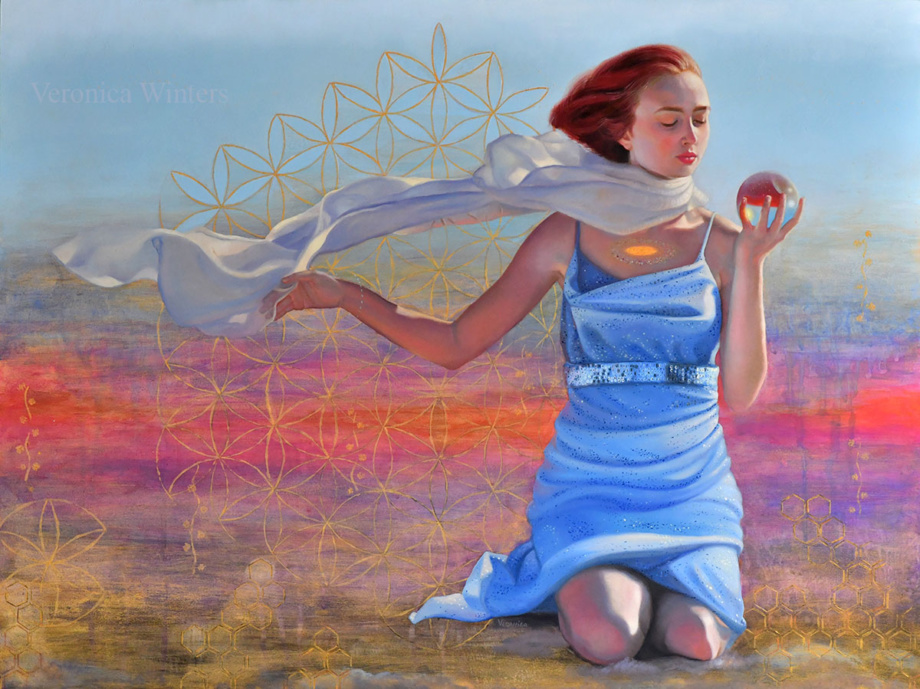
Psychedelic art wallpaper
If you’re a fan of psychedelic art, you may be interested in incorporating it into your home decor. One way to do this is by using psychedelic art wallpaper. This type of wallpaper typically features vibrant colors, sophisticated geometric patterns, and surreal imagery that can add a trippy and mind-bending vibe to any room. You can find a wide variety of psychedelic art wallpaper designs online, ranging from vintage-inspired patterns to more modern and abstract styles. Whether you’re looking to create a psychedelic-inspired bedroom, a colorful living room, or a funky workspace, psychedelic art wallpaper can be a great way to infuse your space with a sense of playfulness and creative energy. Check out my art posters here: https://veronicasart.com/product-category/art-posters-for-sale/ or entire art shop here: https://veronicasart.com/shop/
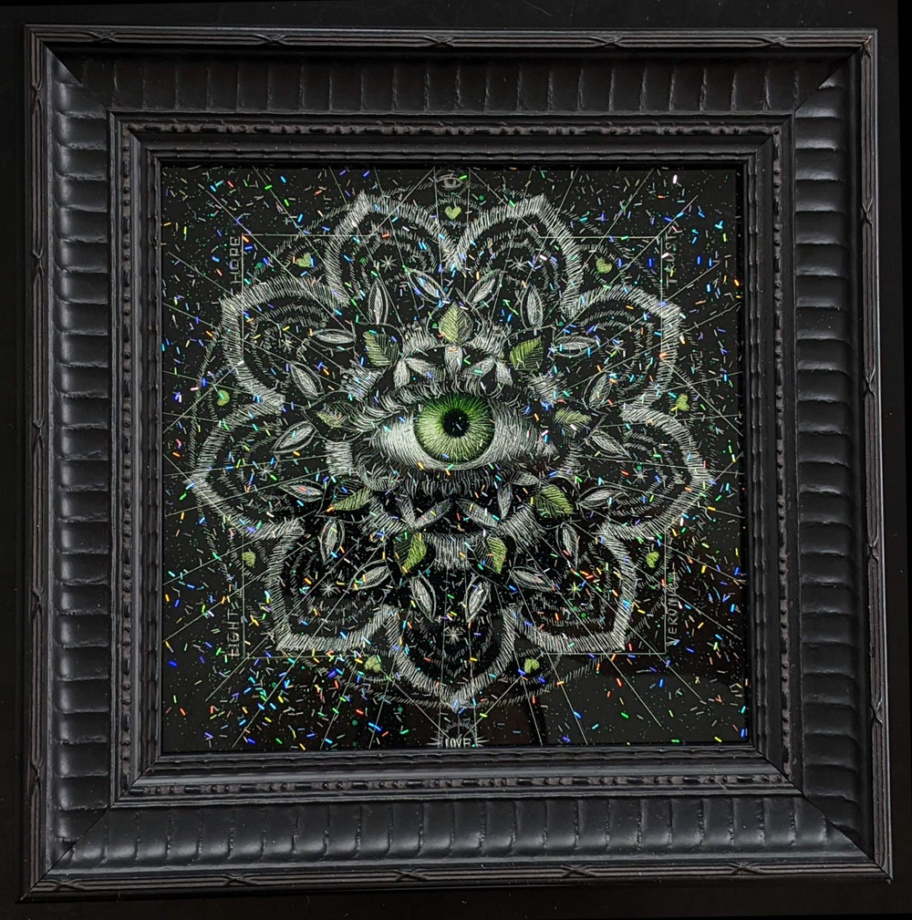
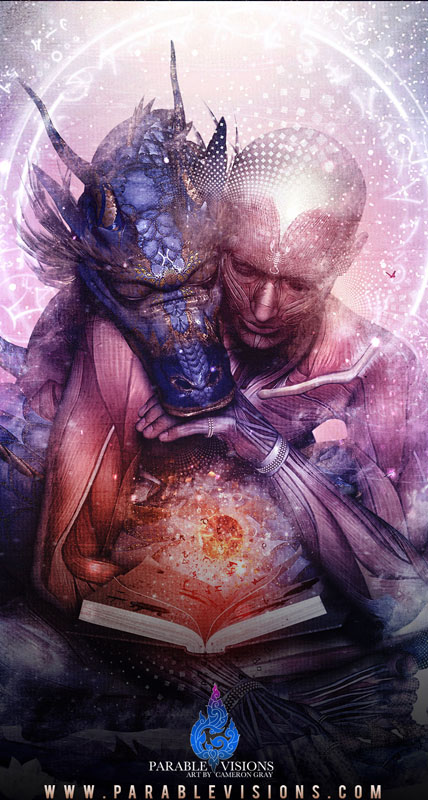
The difference between psychedelic and visionary art
It’s important to note that psychedelic art and visionary art are often used interchangeably, but there are some differences between the two. While both styles incorporate bright colors, geometric patterns, and spiritual themes, visionary art often has a more introspective and mystical quality, and it’s often created by artists who have had transcendent experiences, such as meditation or spiritual practice without the use of psychedelics. Psychedelic art, on the other hand, is more closely associated with the use of psychedelics, and it often has a more overtly trippy quality like in the art of Allyson Grey, co-founder of CoSM. Despite these differences, both styles share a fascination with altered states of consciousness and the inner workings of the mind, and they are often inclusive of a variety of contemporary artists.
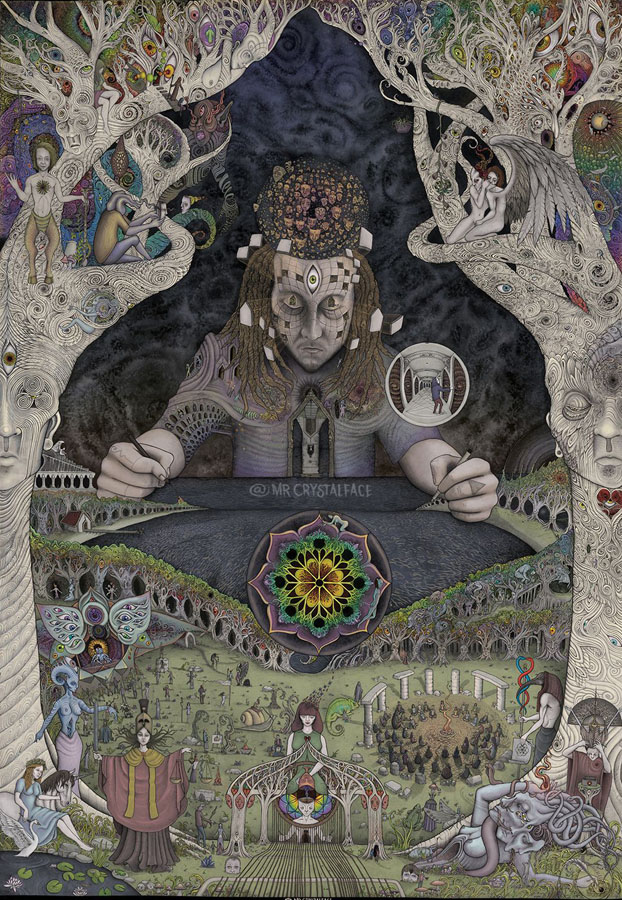
Visionary artists
Like psychedelic art, visionary art is a diverse genre that has many talented artists. Here are some visionary artists, both past and present in addition to previously mentioned psychedelic artists in no particular order. This is not an exhaustive list, and there are many other visionary artists who have created stunning and thought-provoking works that blur the line between art and spirituality.
- Marijke Koger-Dunham
- Roger Dean
- Ernst Fuchs
- Mati Klarwein
- Veronica Winters
- Randal Roberts
- Luke Brown
- Carey Thompson
- Laurence Caruana
- Autumn Skye Morrison
- Mark Henson
- David Heskin
- Orphne Acheron
- Xavi Panneton
The difference between psychedelic art and surrealism
While both psychedelic art and surrealism share some similarities in terms of their use of unconventional imagery, there are several key differences between the two art movements.
Psychedelic art emerged in the 1960s as part of the counterculture movement, and is characterized by its use of vivid colors, swirling patterns, and distorted forms. Psychedelic art often aims to create a visual representation of the psychedelic experience or altered states of consciousness, and is often associated with the use of mind-altering substances.
Surrealism, on the other hand, emerged in the 1920s as a literary and artistic movement, and is characterized by its use of unexpected, irrational, and dreamlike imagery with Dali being the most famous artist in the movement. Surrealist art often aims to challenge conventional perception, and to explore the unconscious mind capturing or interpreting dreams. While some surrealist artists may have been influenced by the use of mind-altering substances, this was not a defining characteristic of the movement.
Another key difference between the two art movements is their underlying philosophy. While psychedelic art is often associated with the counterculture movement and its emphasis on individual freedom and liberation, as well as the medicinal quality of psychedelics, surrealism is rooted in a Freudian philosophy that seeks to challenge societal norms and explore the unconscious mind based on dreams rather than on altered reality during the trip.
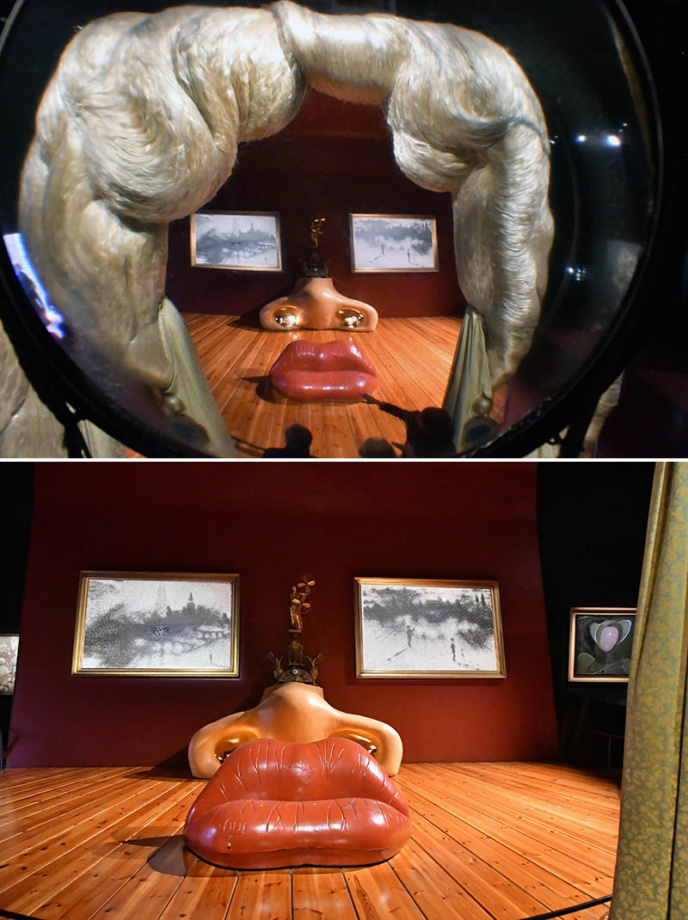
Famous Surrealist artists:
- Dali
- Magritte
- Remedios Varo
- Max Ernst
- Andre Breton
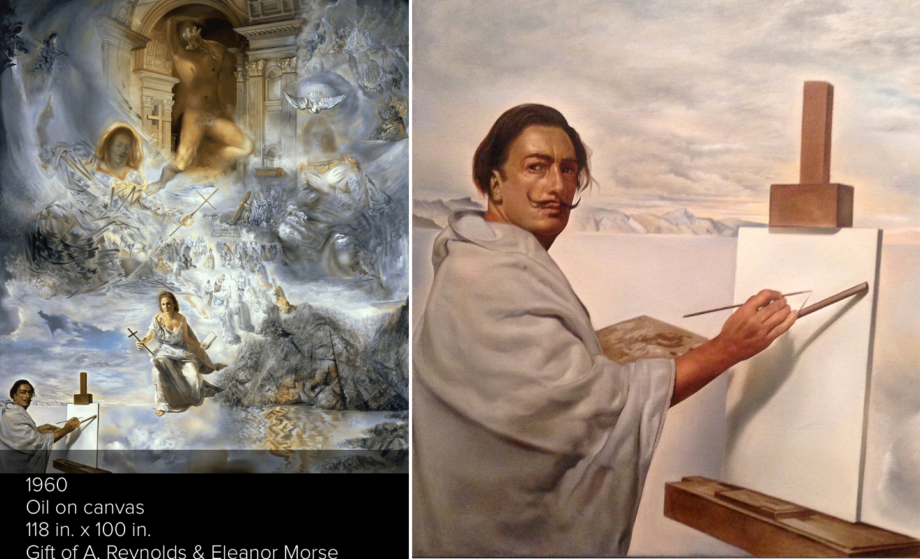
How to reach an altered state of mind without the use of psychedelics:
It’s possible to reach an altered state of mind without the use of psychedelics. Here are some ways:
Meditation: Meditation is a practice that involves focusing your attention and quieting your mind. With regular practice, meditation can lead to altered states of consciousness, including feelings of bliss, oneness with the universe, and spiritual experiences.
Breathwork: Breathwork is a practice that involves intentional breathing exercises to induce altered states of consciousness. Different types of breathwork techniques, such as holotropic breathwork, rebirthing, and pranayama, can be used to achieve different states of consciousness.
Yoga: Yoga is a physical and spiritual practice that originated in ancient India. In addition to physical postures, yoga incorporates breathing techniques, meditation, and other practices that can lead to altered states of consciousness.
Sensory deprivation: Sensory deprivation involves removing external stimuli, such as light and sound, to induce altered states of consciousness. This can be done through float tanks, isolation tanks, or other types of sensory deprivation chambers.
Dance: Certain types of dance, such as ecstatic dance or trance dance, involve moving the body to music in a way that can induce altered states of consciousness.
It’s important to note that altered states of consciousness can be powerful experiences and should be approached with care and respect. It’s also important to seek guidance from trained professionals and to have a safe and supportive environment when exploring these practices.
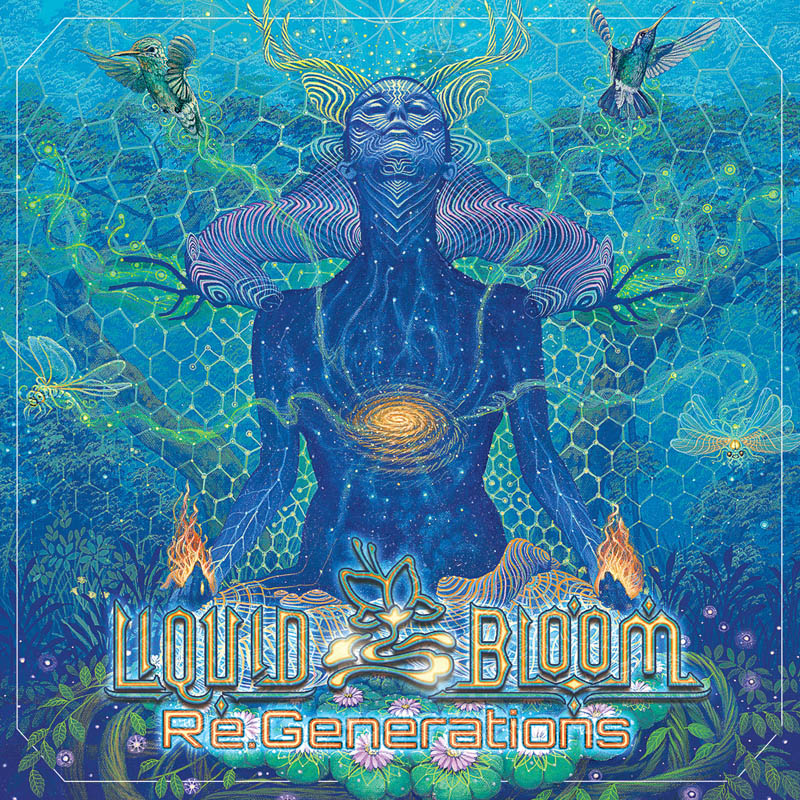
Music & psychedelics
Psychedelic substances like LSD, ayahuasca and psilocybin are known to alter perception, mood, and cognition in a way that enhance the experience of listening to music. Many people report that music sounds more intense, meaningful, and transcendent while under the influence of psychedelics. One reason for this may be that psychedelics increase the brain’s sensitivity to sensory stimuli, including sound. This can lead to an enhanced appreciation of music, and can also cause synesthesia, a perceptual phenomenon where different senses become cross-wired, causing people to “see” colors or patterns in response to certain sounds or musical notes. While the music influences the visuals during the trip, it mostly enhances the meaning or messages you receive during the psychedelic experiences by creating a supportive and immersive environment.
There is a cultural connection between music and psychedelics as well. In the 1960s, the counterculture movement embraced both psychedelic substances and music, with many iconic rock bands like the Beatles and the Grateful Dead incorporating psychedelic themes and sounds into their music. Psychedelic music, with its emphasis on improvisation, experimentation, and unconventional sounds, became a hallmark of the era. There are many musicians and bands that have experimented with psychedelic substances and incorporated psychedelic themes and sounds into their music. Here are a few examples:
The Beatles: The Beatles were famously associated with LSD and other psychedelics in the 1960s, and their music from this period, including albums like “Sgt. Pepper’s Lonely Hearts Club Band” and “Magical Mystery Tour,” is characterized by a trippy, psychedelic sound.
Pink Floyd: Pink Floyd is another iconic band associated with psychedelics, particularly the use of LSD. Their album “The Piper at the Gates of Dawn” is considered a classic of psychedelic rock, and later albums like “The Dark Side of the Moon” and “Wish You Were Here” also feature psychedelic themes and sounds.
The Grateful Dead: The Grateful Dead were known for their association with the counterculture and the use of LSD, and their music was a blend of rock, folk, and psychedelic sounds. Their concerts were often characterized by long improvisational jams that could stretch for hours, creating an immersive and psychedelic experience for audiences.
Jimi Hendrix: Jimi Hendrix was a guitar virtuoso and one of the most influential musicians of the 1960s. His music incorporated elements of psychedelia, blues, and rock, and his performances were known for their improvisational and experimental qualities.
Tame Impala: Tame Impala is a contemporary band that has been influenced by psychedelic rock and other genres. Their music often features swirling, trippy sounds, and their lyrics can have a psychedelic or introspective quality.
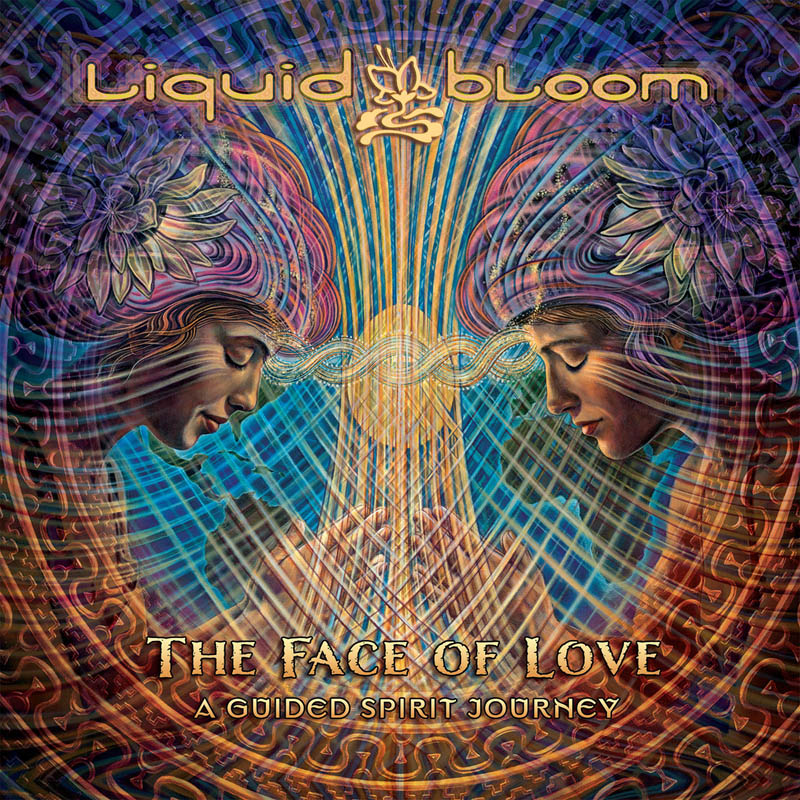
Music list of contemporary spiritual artists playing on Spotify:
Today, we can find musicians who both incorporate their psychedelic experiences into their music and create music for the purpose of listening to it during the spiritual journey, shamanic ceremony or to dance, meditate, or practice yoga. Just like in art, we can find a cross over between the psychedelic music and spiritual one. One such example is Liquid Bloom. Liquid Bloom is a collaborative music project spearheaded by producer Amani Friend of Desert Dwellers. The project blends ambient, world, and psychedelic elements to create a meditative and hypnotizing sound. Liquid Bloom has collaborated with Poranguí, Deya Dova, Mose, Arsen Petrosyan, Ixchel Prisma, Rara Avis, Shamans Dream, and Numatik drawing inspiration from nature and the power of music to heal and inspire. You can find these artists on Spotify!
- Liquid Bloom
- Desert Dwellers
- Maneesh de Moor
- Pere
- Starling Arrow
- Freedom Cafe
- Tina Malia
- East Forest
- Ajeet & Peia
- Jessica Om
- Alvaro Santamaria
- Christian Bollmann & Daniel Namkhay
- Danit
- Darpan
- Porangui
- Bird Tribe
- The white arrow
- Nessi Gomes
- Tina Malia
- Sheila Chandra
- Ohme and many more!
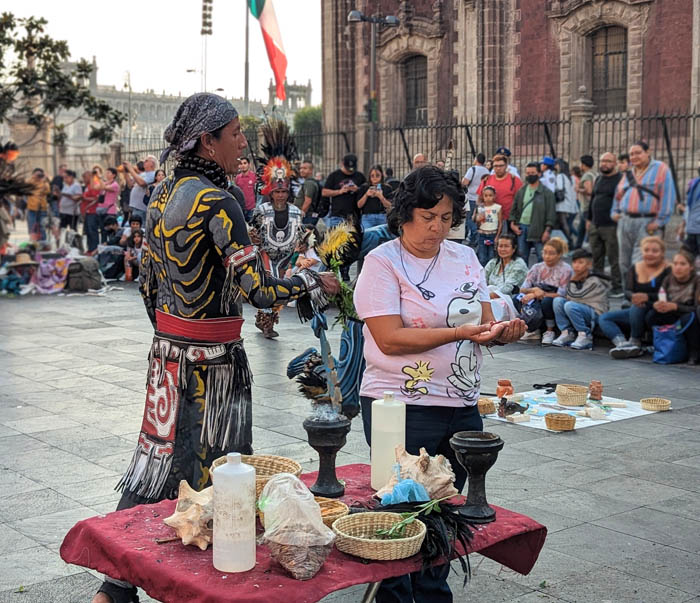
Why shamans are important for your psychedelic journey?
Shamans are often seen as important guides and facilitators for psychedelic journeys because they have a deep understanding of the spiritual and psychological dimensions of the experience. They have often undergone extensive training and have experience when it comes to working with altered states of consciousness. They can provide guidance, context, healing, and connection. Their main task is healing. They can help to facilitate a safe and meaningful journey, and can help the person to integrate the experience into their life in a way that is positive and transformative. Trained psychologists can help you integrate your experience with the medicine as well.
Some of the ways in which shamans can be important for psychedelic journeys include:
Guidance: A shaman can provide guidance and support during a psychedelic journey, helping the person to navigate the experience and providing a sense of safety and security.
Context: A shaman can help to provide a cultural and spiritual context for the psychedelic experience, which can help the person to better understand and integrate the experience into their life.
Healing: Shamans are often seen as healers, and can use their knowledge and skills to help a person work through psychological or spiritual issues that may arise during a psychedelic journey.
Connection: A shaman can help the person to connect with the spiritual or mystical dimensions of the experience, which can be transformative and life-changing.
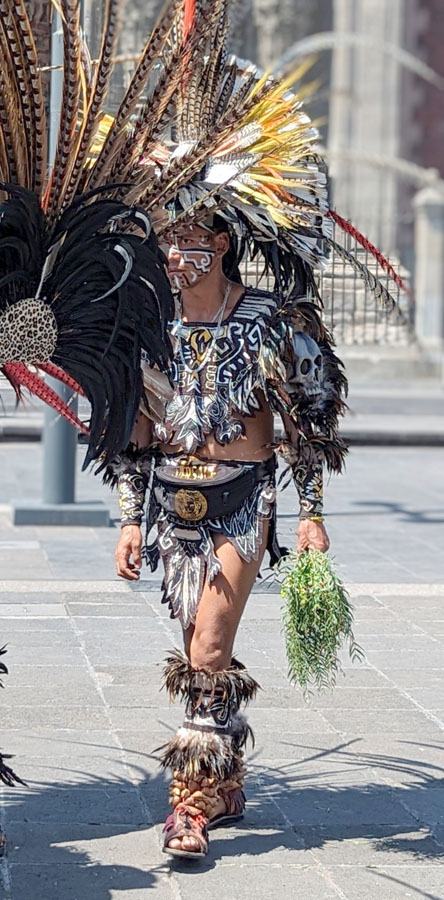
What’s the difference between the CBD and psychedelics?
The main difference between CBD and psychedelics lies in their effects on the brain and the experiences they produce. Here’s a breakdown:
CBD (Cannabidiol):
- Non-psychoactive: Doesn’t induce the mind-altering, “trippy” experiences associated with psychedelics.
- Potential health benefits: Research suggests it may help with anxiety, pain, insomnia, and other conditions, although more research is needed.
- Mechanism of action: Interacts with the endocannabinoid system, influencing various physiological and cognitive processes.
- Legality: Generally legal in most places, though regulations can vary.
Psychedelics:
- Psychoactive: Produce alterations in perception, emotions, and thoughts, often including intense visual and auditory distortions.
- Experiences can be varied: Can range from mystical insights to frightening hallucinations, depending on the substance and individual factors.
- Mechanism of action: Primarily bind to serotonin receptors in the brain, leading to increased neuronal activity and altered signal transmission.
- Legality: Restricted or illegal in most countries due to their mind-altering effects.
Here’s a table summarizing the key differences:
| Feature | CBD | Psychedelics |
|---|---|---|
| Psychoactive effects | No | Yes |
| Legality | Generally legal | Restricted/illegal |
| Mechanism of action | Endocannabinoid system | Serotonin receptors |
| Potential health benefits | Anxiety, pain, insomnia | Varied, research ongoing |
| Common experiences | None | Altered perception, emotions, thoughts |
Top sources for further information:
Information about these substances is constantly evolving, and it’s always best to consult reliable sources for the latest research and legal updates.
- National Institute on Drug Abuse (NIDA): https://www.nih.gov/about-nih/what-we-do/nih-almanac/national-institute-drug-abuse-nida
- MAPS (Multidisciplinary Association for Psychedelic Studies): https://maps.org/about-maps/
- Project CBD: https://projectcbd.org/
- Erowid: https://www.erowid.org/
Organizations studying psychedelics:
In recent years, there has been a resurgence of interest in the therapeutic potential of psychedelics, and several organizations have emerged to study the use of these substances in medicine and psychology. Here are top organizations that are studying psychedelics:
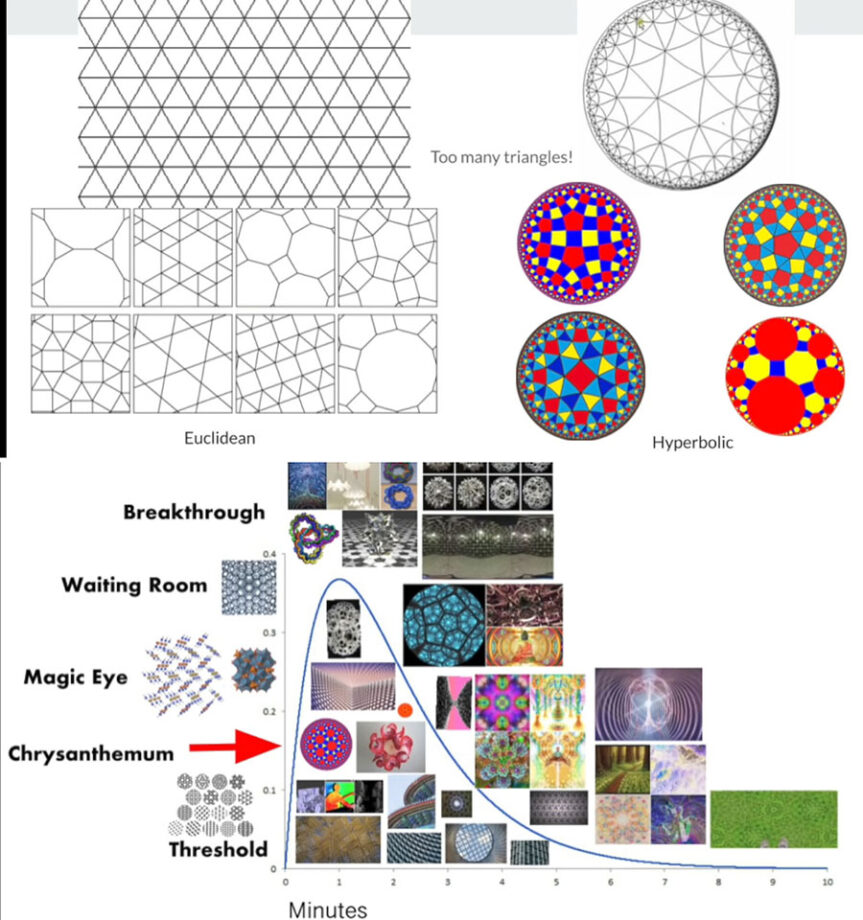
Multidisciplinary Association for Psychedelic Studies (MAPS): MAPS is a non-profit research and advocacy organization that is dedicated to exploring the therapeutic potential of psychedelic drugs like MDMA, LSD, and psilocybin. MAPS conducts clinical trials and studies to investigate the use of these substances in treating conditions like PTSD, depression, and anxiety.
Heffter Research Institute: Heffter is a non-profit organization that supports research into the therapeutic use of psychedelics. Heffter funds clinical trials and studies that investigate the use of substances like psilocybin and MDMA in treating addiction, anxiety, and depression.
Beckley Foundation: The Beckley Foundation is a UK-based organization that supports research into the therapeutic and medicinal properties of psychedelics. The foundation funds studies into the use of substances like psilocybin, LSD, and DMT in treating conditions like depression, anxiety, and addiction.
Center for Psychedelic Research at Imperial College London: The Center for Psychedelic Research is a research group at Imperial College London that is dedicated to investigating the effects of psychedelic drugs on the brain and behavior. The center conducts studies on the use of substances like psilocybin, LSD, and DMT in treating mental health conditions like depression and addiction.
Soul Quest Ayahuasca Church of Mother Earth: Located in Orlando, Florida, this organization provides retreats and shamanic experiences giving ayahuasca and other psychedelic medicines. Staff, shamans and guides create safe and healing environment helping you with post-integration as well.
As research into these sacred substances continues to expand, it’s likely that we’ll see the emergence of new organizations and initiatives dedicated to exploring the potential benefits of the medicine.
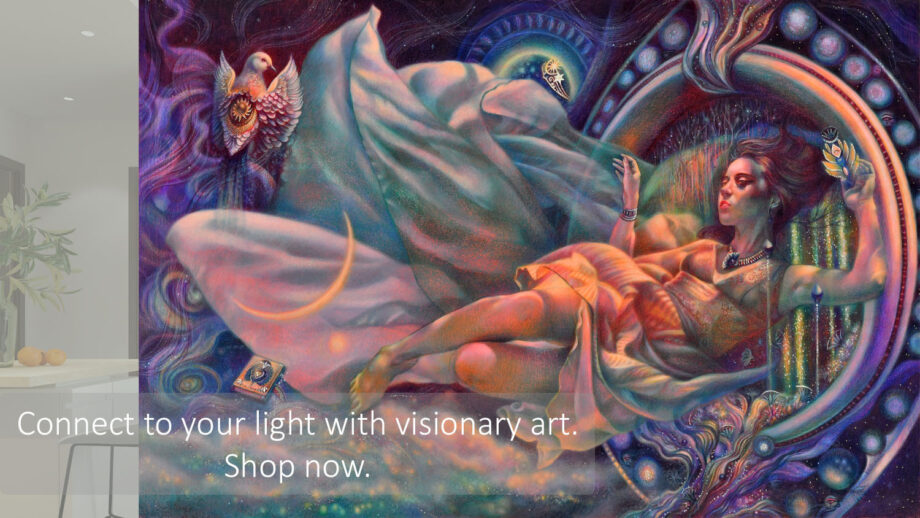
Art shop
Some published books about psychedelic research:
There are a number of books that have been published about psychedelic research over the years.
- “The Psychedelic Explorer’s Guide” by James Fadiman: This book provides practical advice and guidance for people interested in exploring the use of psychedelics for personal growth and spiritual development.
- “How to Change Your Mind” by Michael Pollan: This book explores the history of psychedelic research, the science behind the use of psychedelics, and their potential therapeutic benefits.
- “The Doors of Perception” by Aldous Huxley: This classic book explores Huxley’s experiences with mescaline and provides a philosophical and cultural perspective on the use of psychedelics.
- “The Harvard Psychedelic Club” by Don Lattin: This book tells the story of how Timothy Leary, Richard Alpert (later known as Ram Dass), and other researchers at Harvard in the 1960s conducted pioneering studies on the use of LSD and other psychedelics.
- “Acid Test” by Tom Shroder: This book tells the story of how a group of researchers and advocates are working to bring psychedelic therapy back into the mainstream and explores the potential benefits and challenges of this approach.
This book list was written with ChatGPT
Conclusion
Psychedelic art is a fascinating art form! Its history, style and spiritual dimensions offer a glimpse into the human psychic, divine spirit and hidden interconnectedness with everything living in the Universe. By exploring and appreciating psychedelic art, we can gain a greater understanding of ourselves and the world around us. If you’re interested in exploring similar topics or art styles, be sure to check out surrealism and visionary art movements. Visionary and psychedelic artists help us expand our consciousness, inspire creativity, and heal our hearts. By exploring new realms we can learn more about ourselves and others feeling the interconnectedness of everything living in the Universe, seeing the divine spirit and being one with nature.
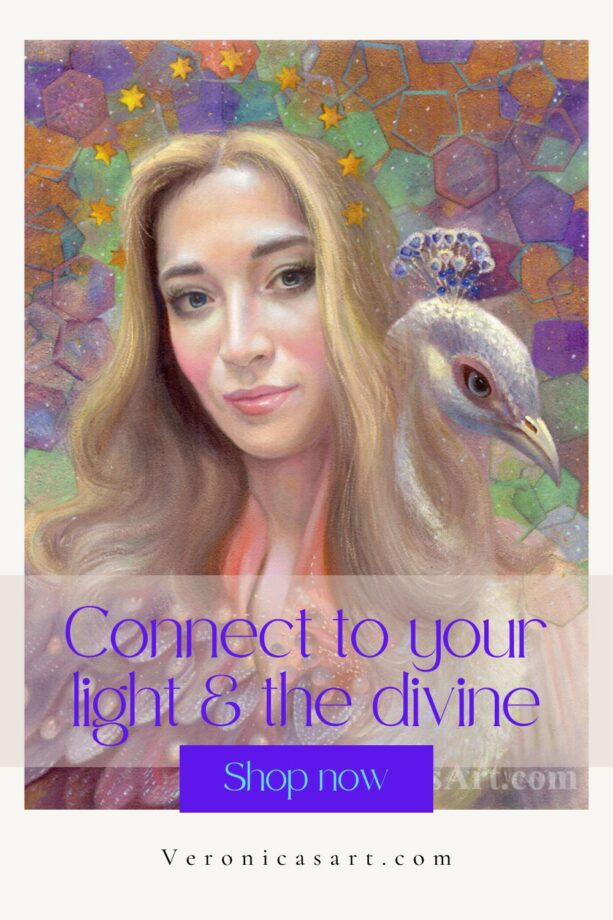
SHOP visionary art for sale now!
If you have a question or want to say’ hello’, connect with me here: